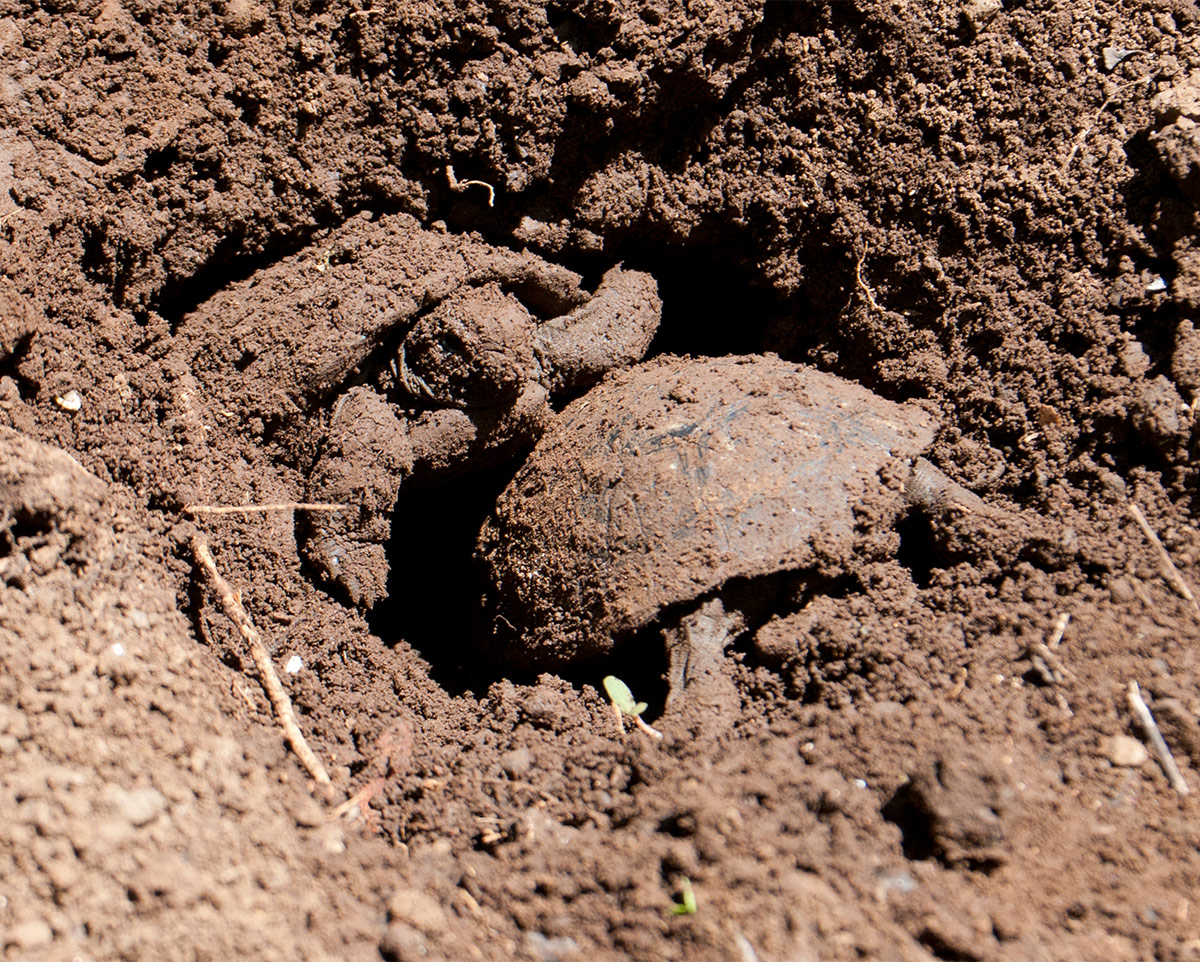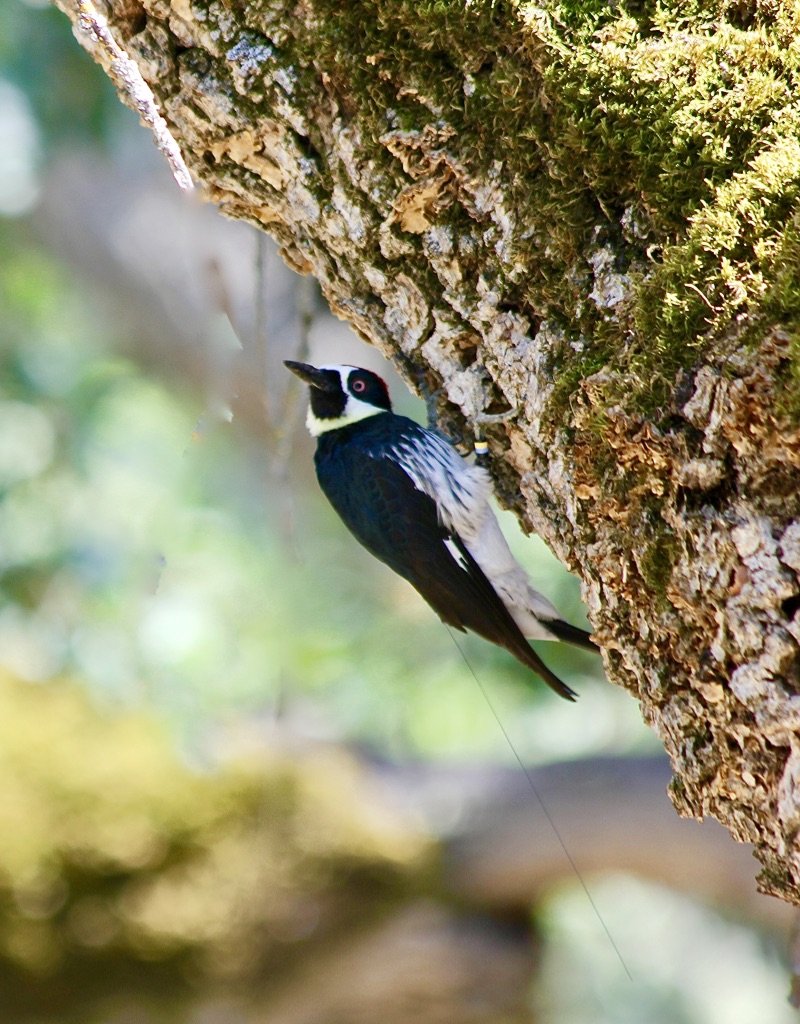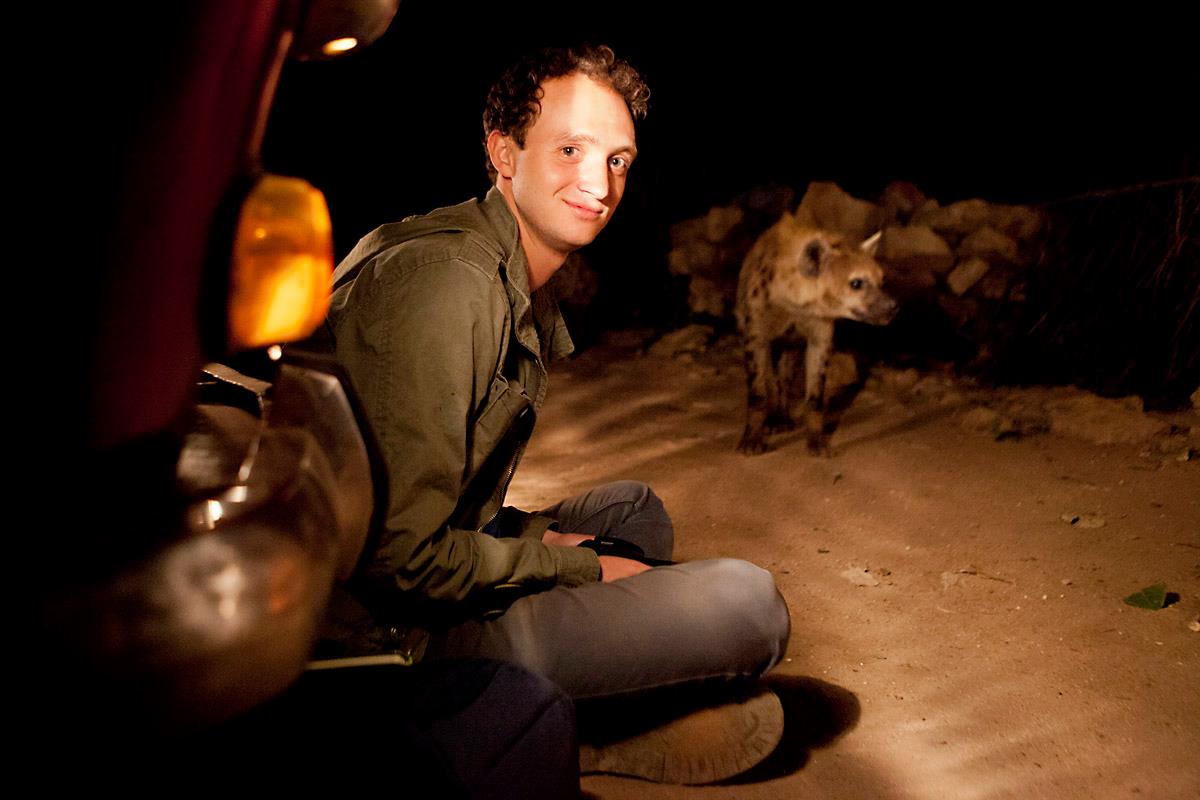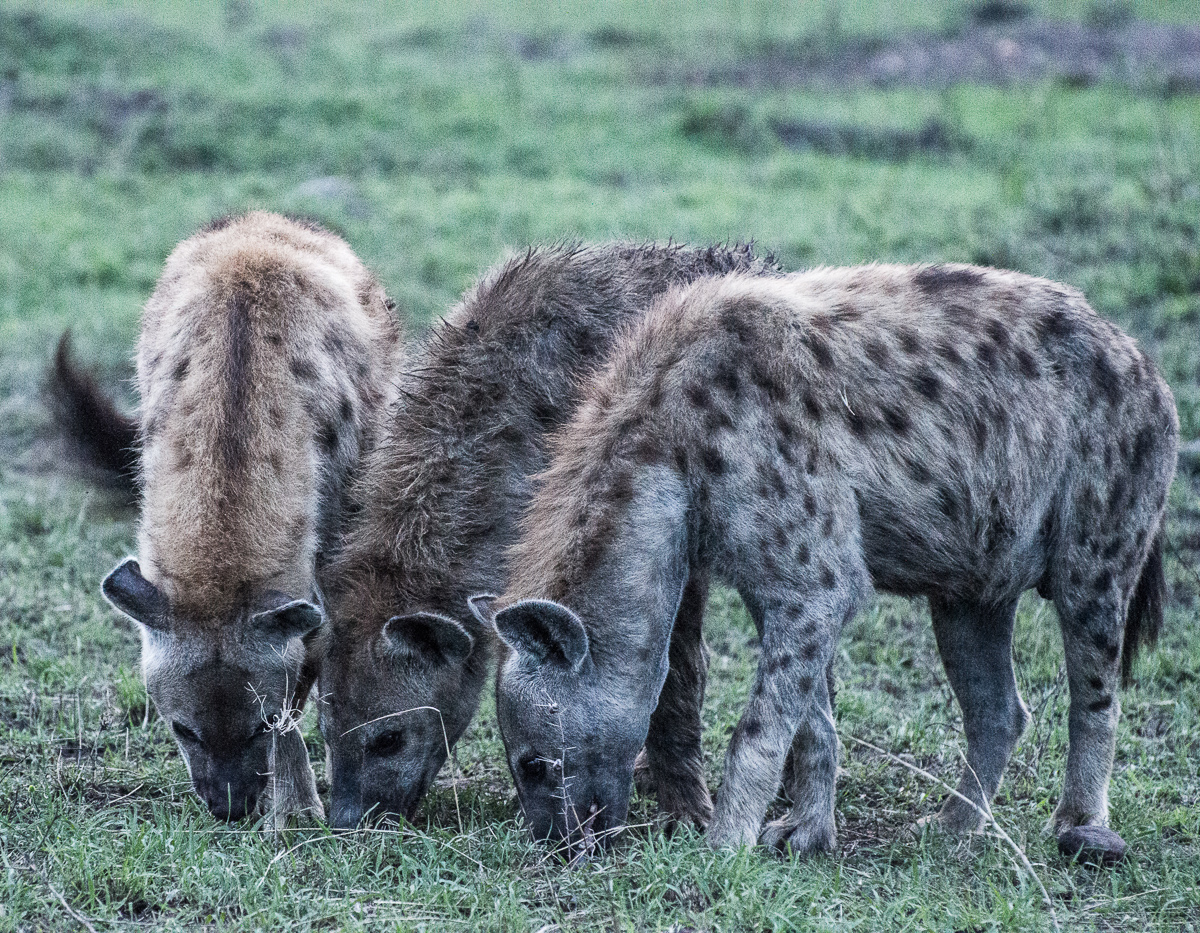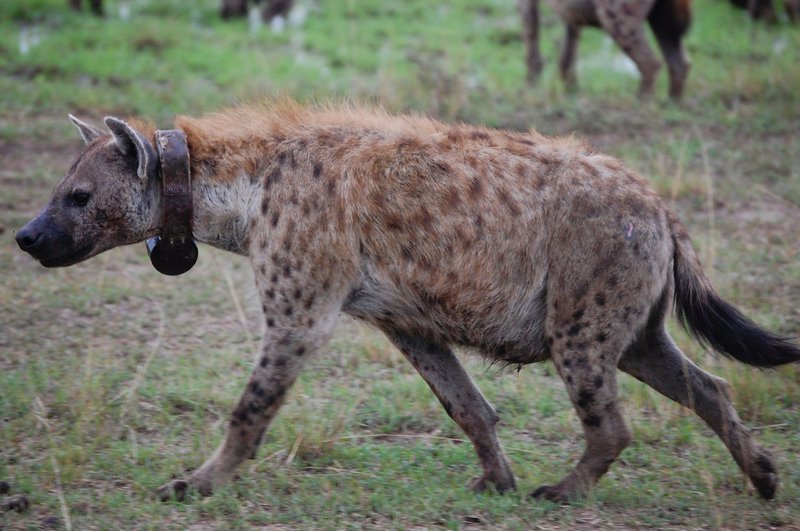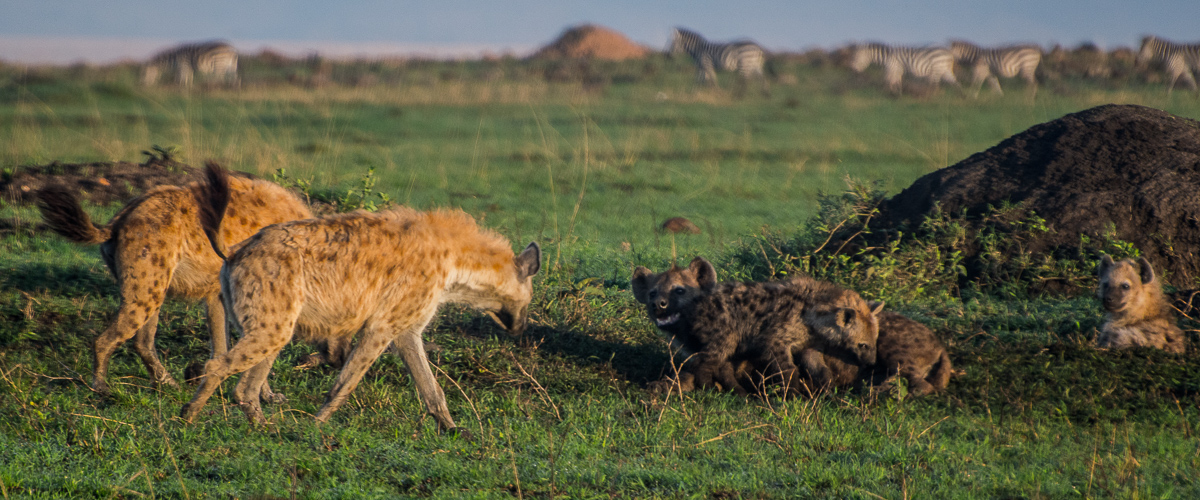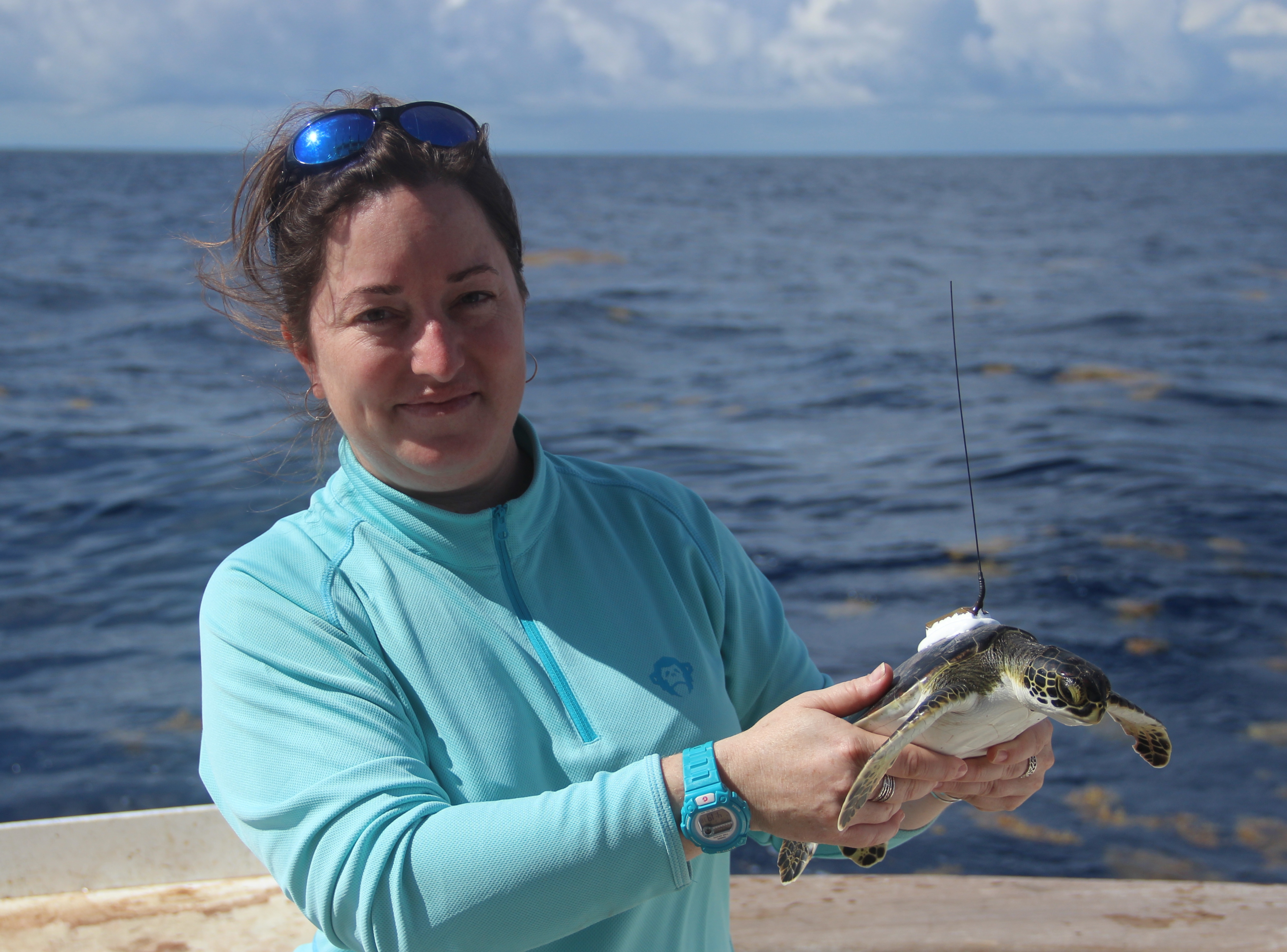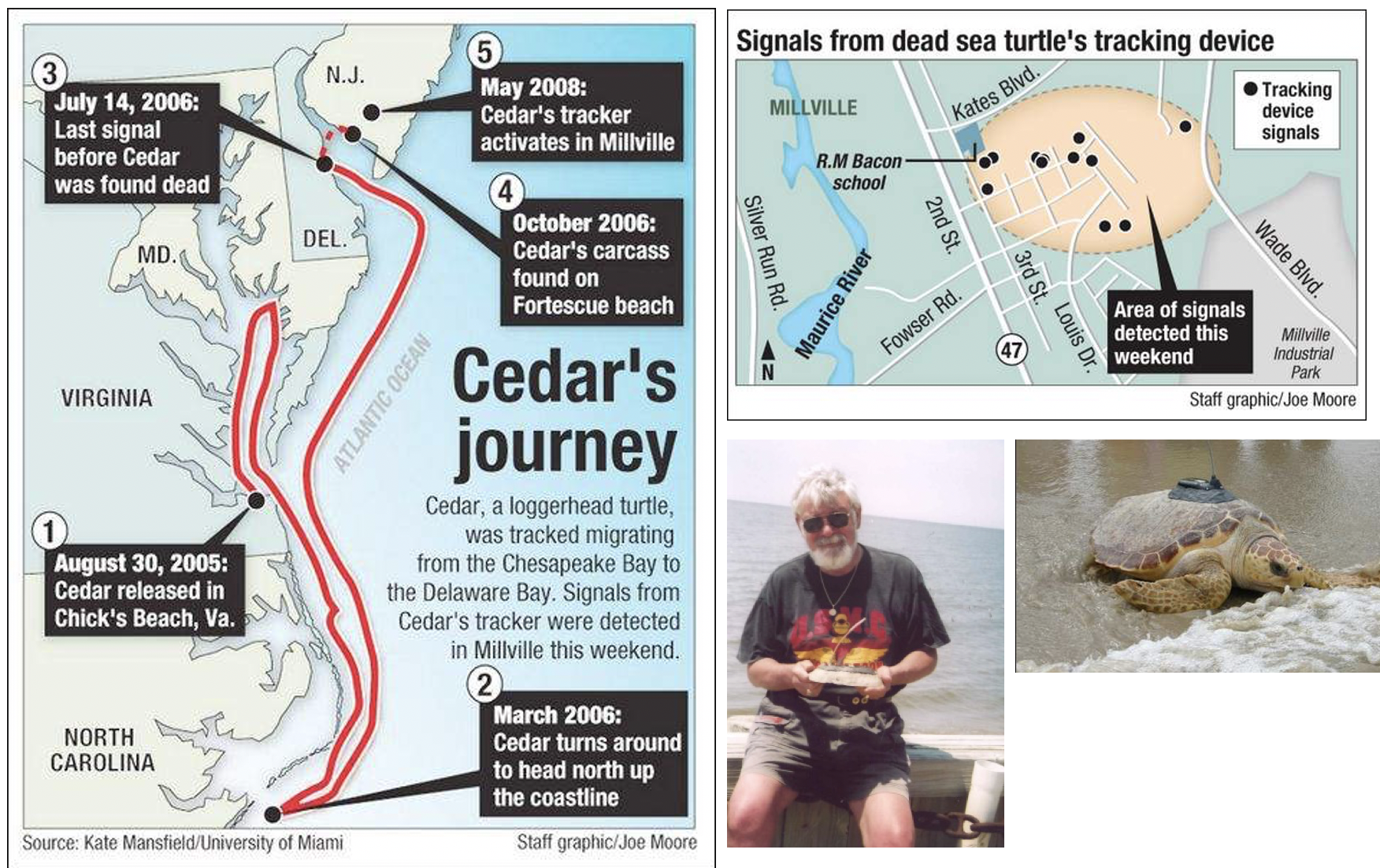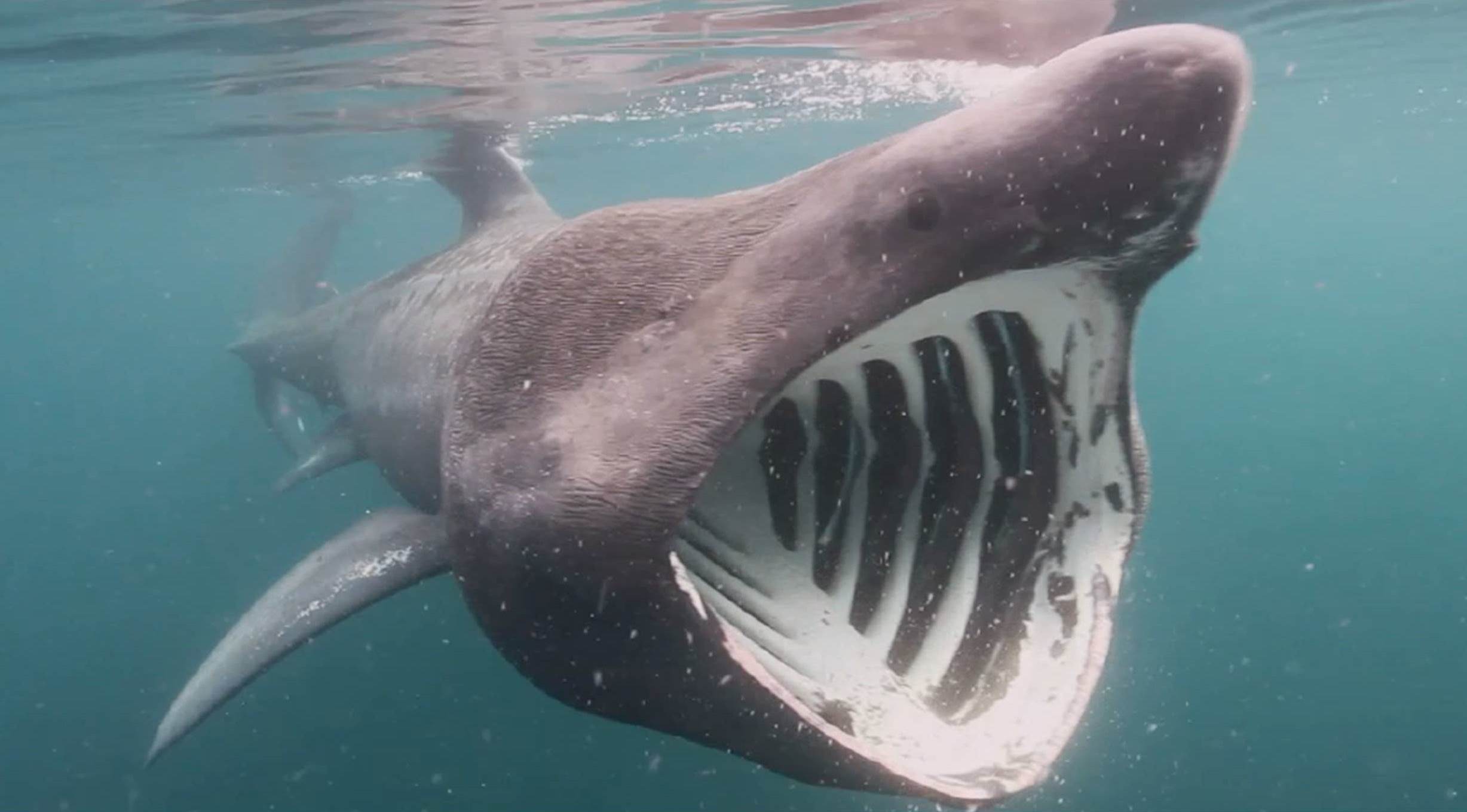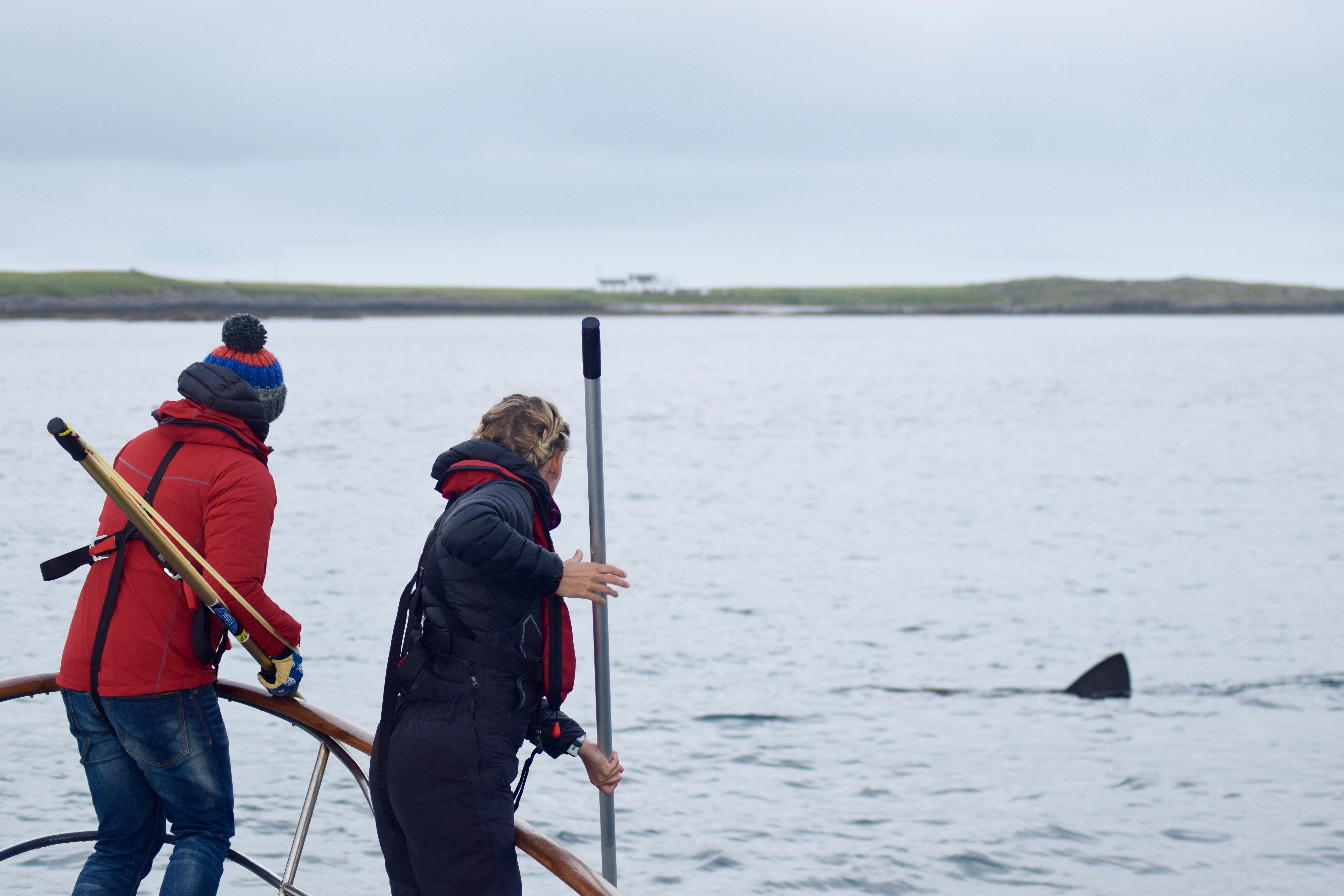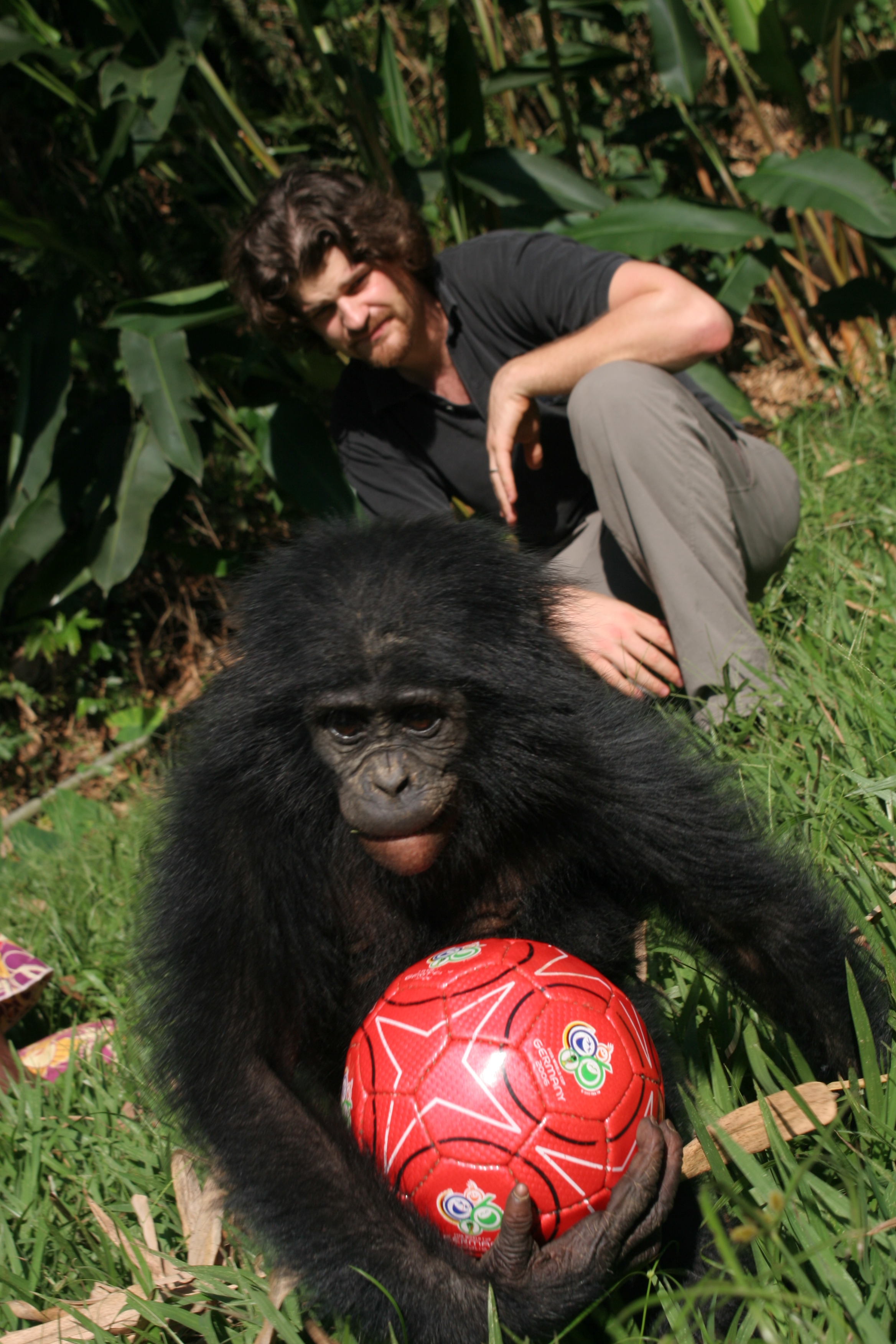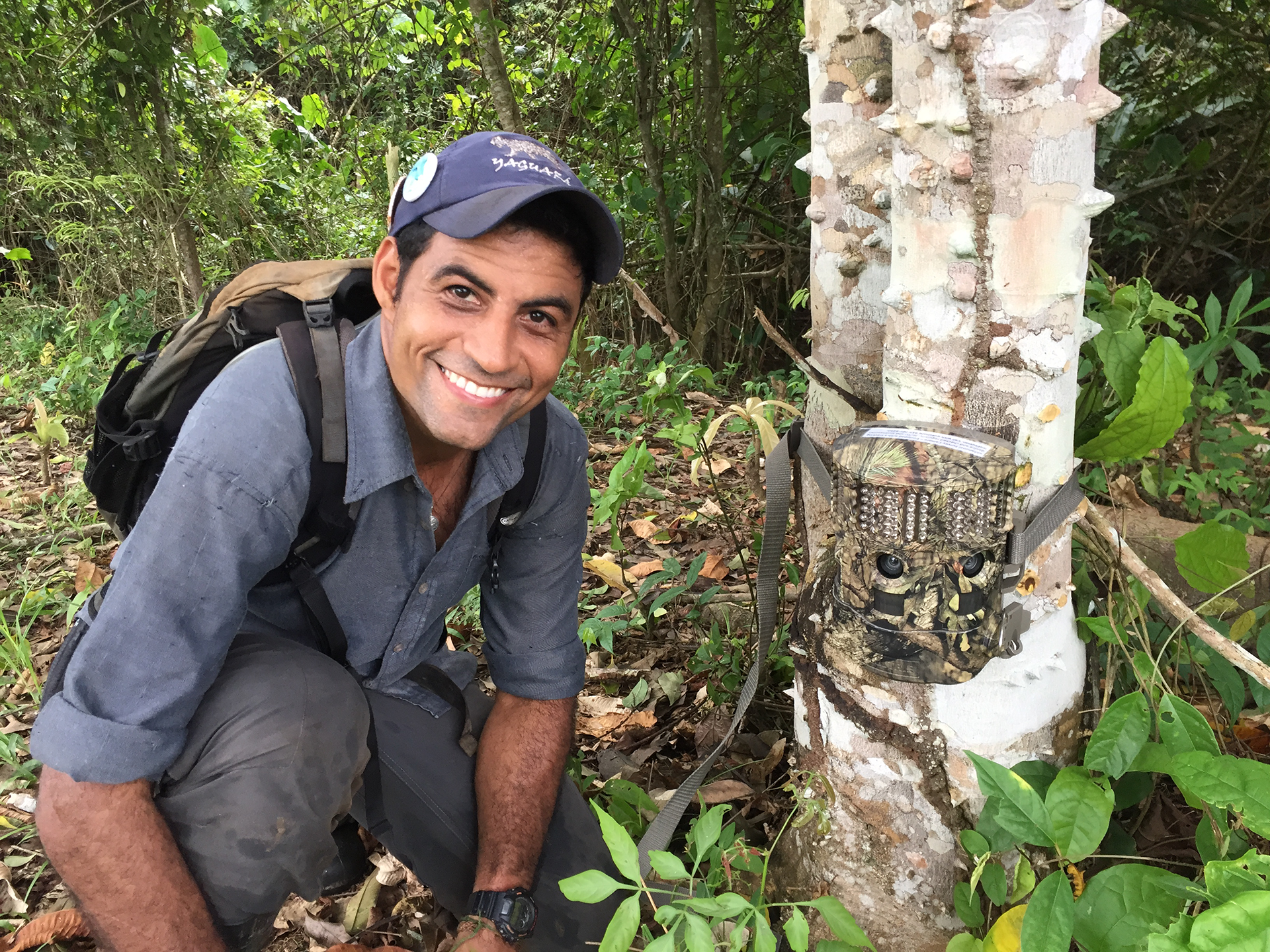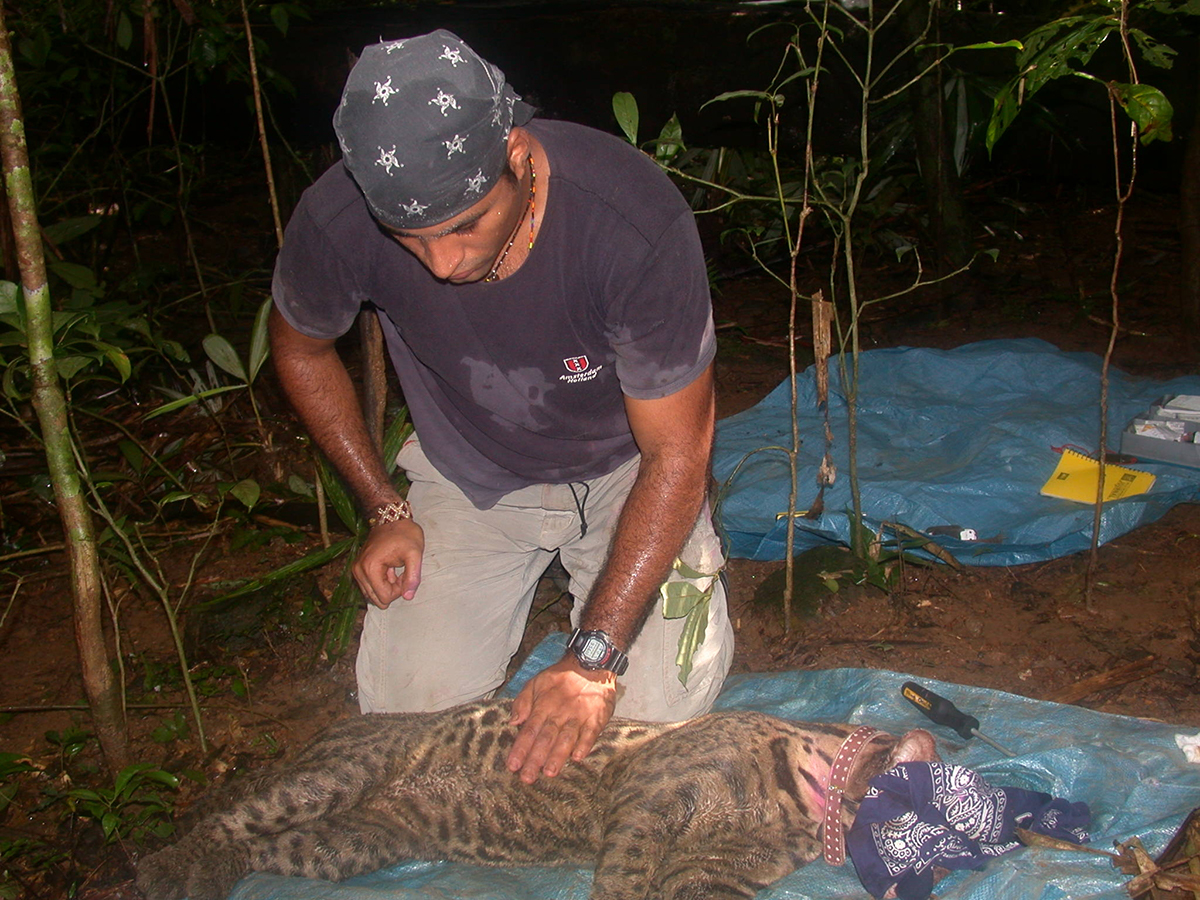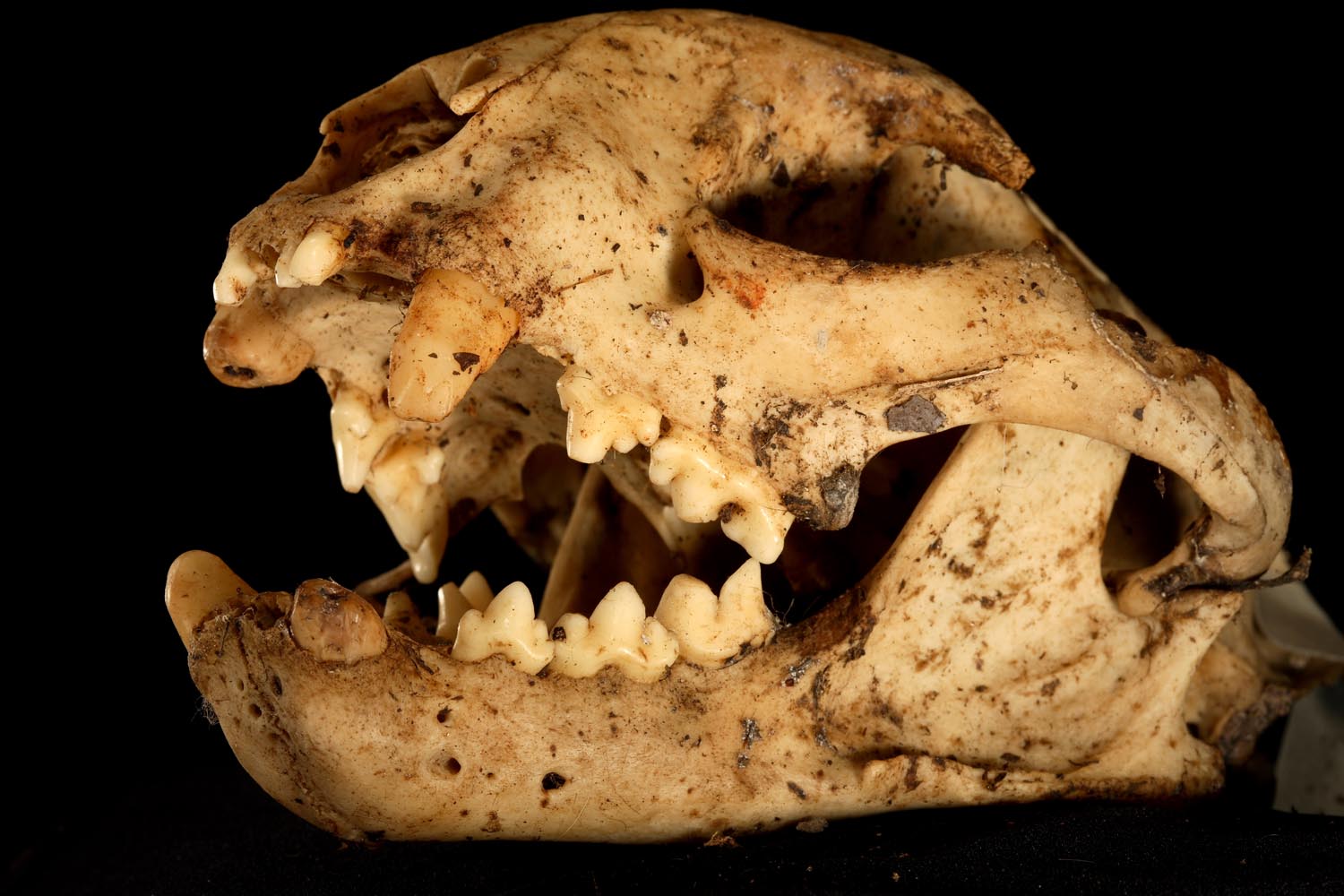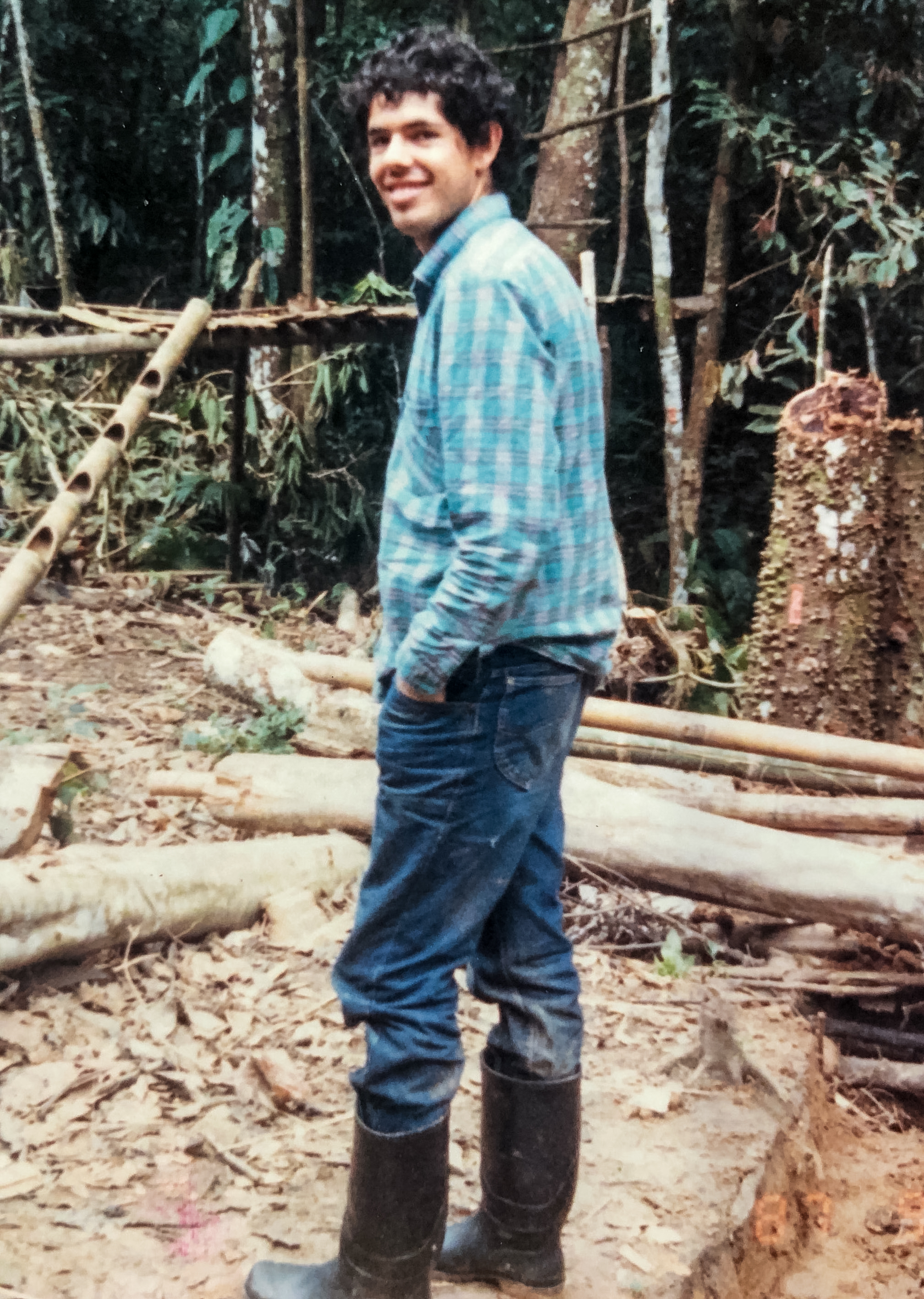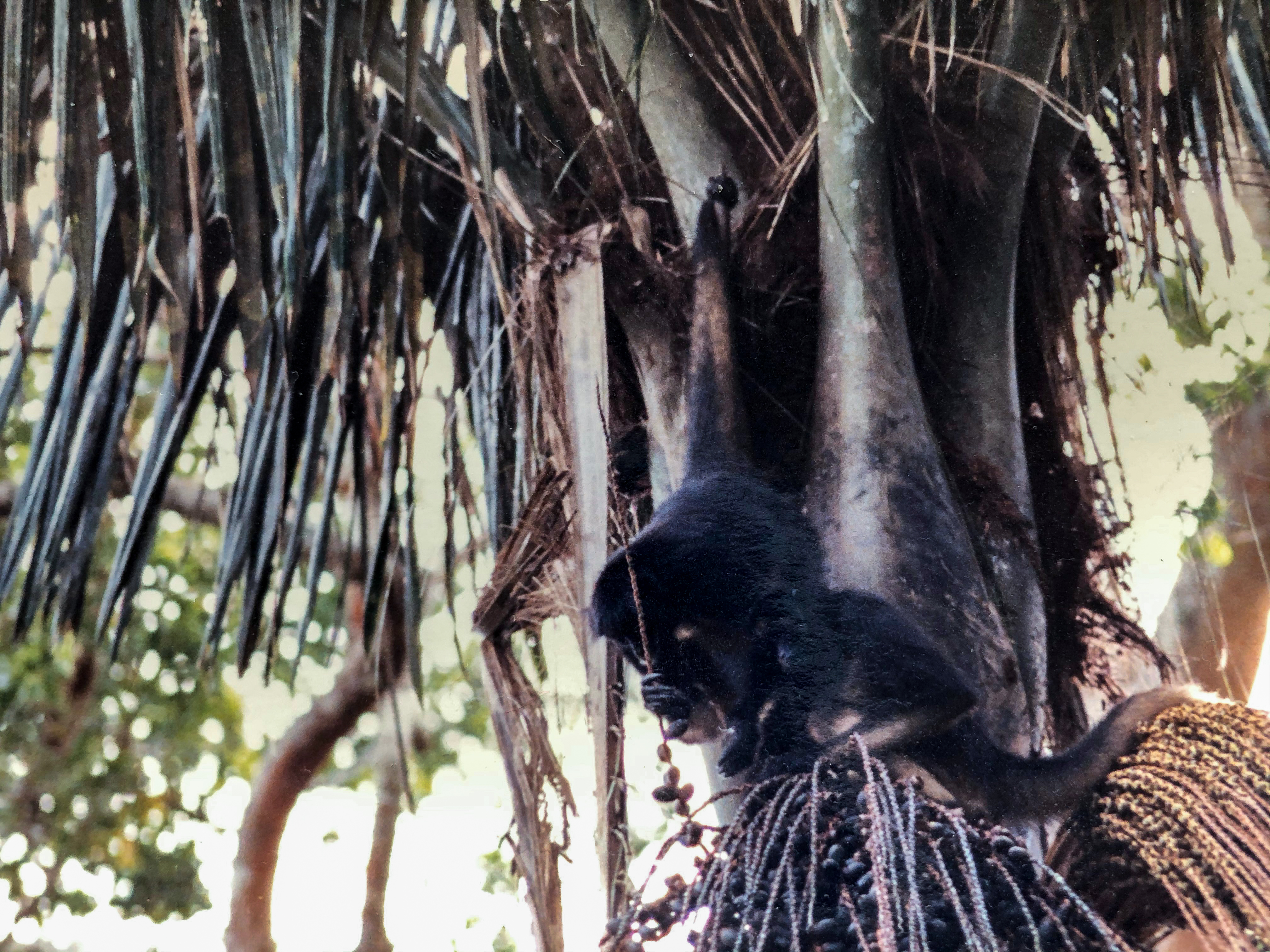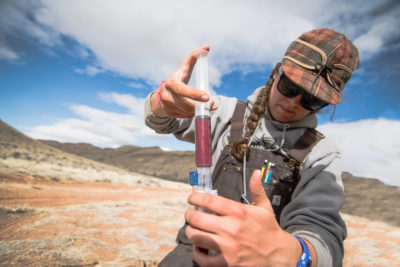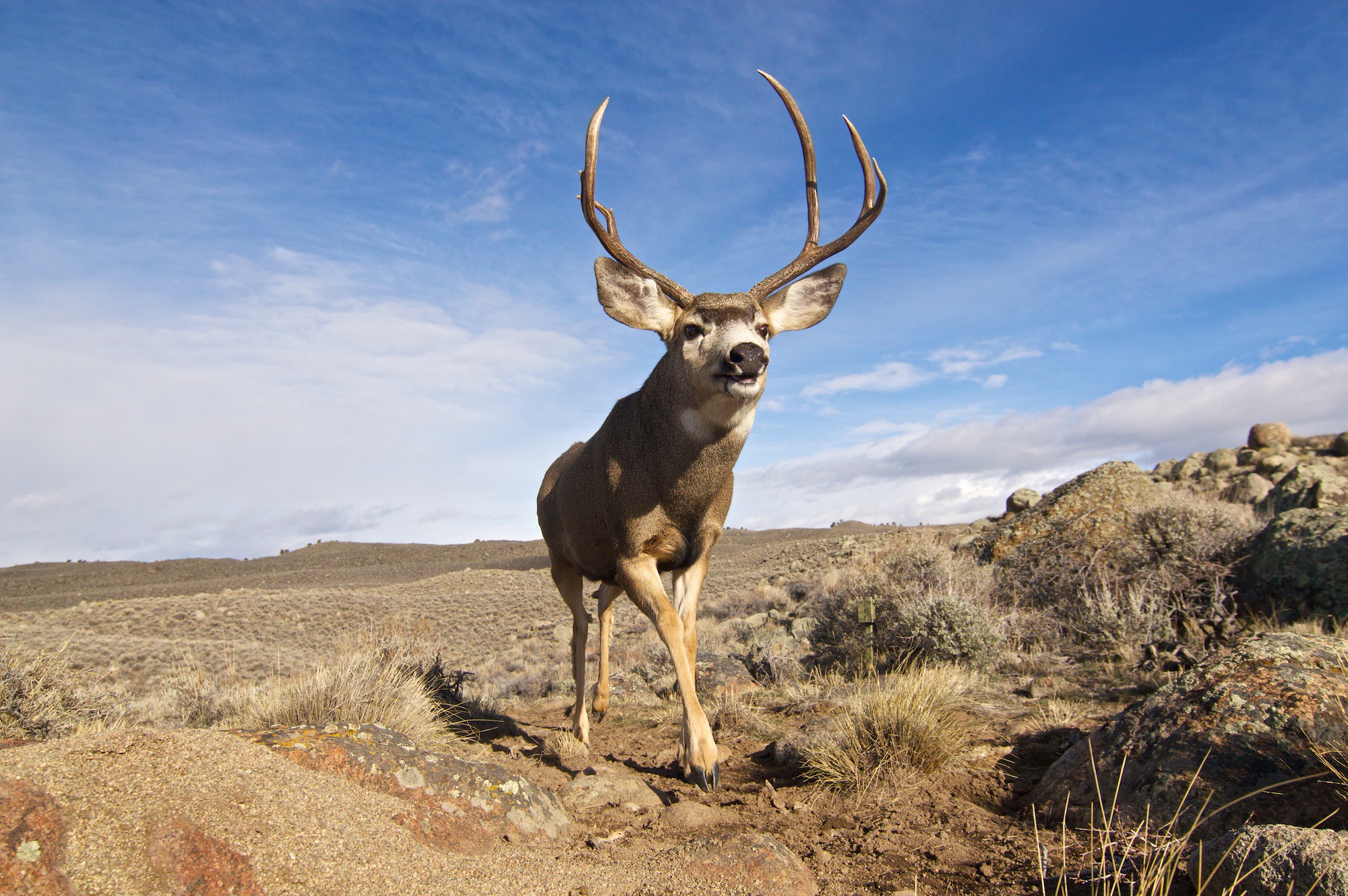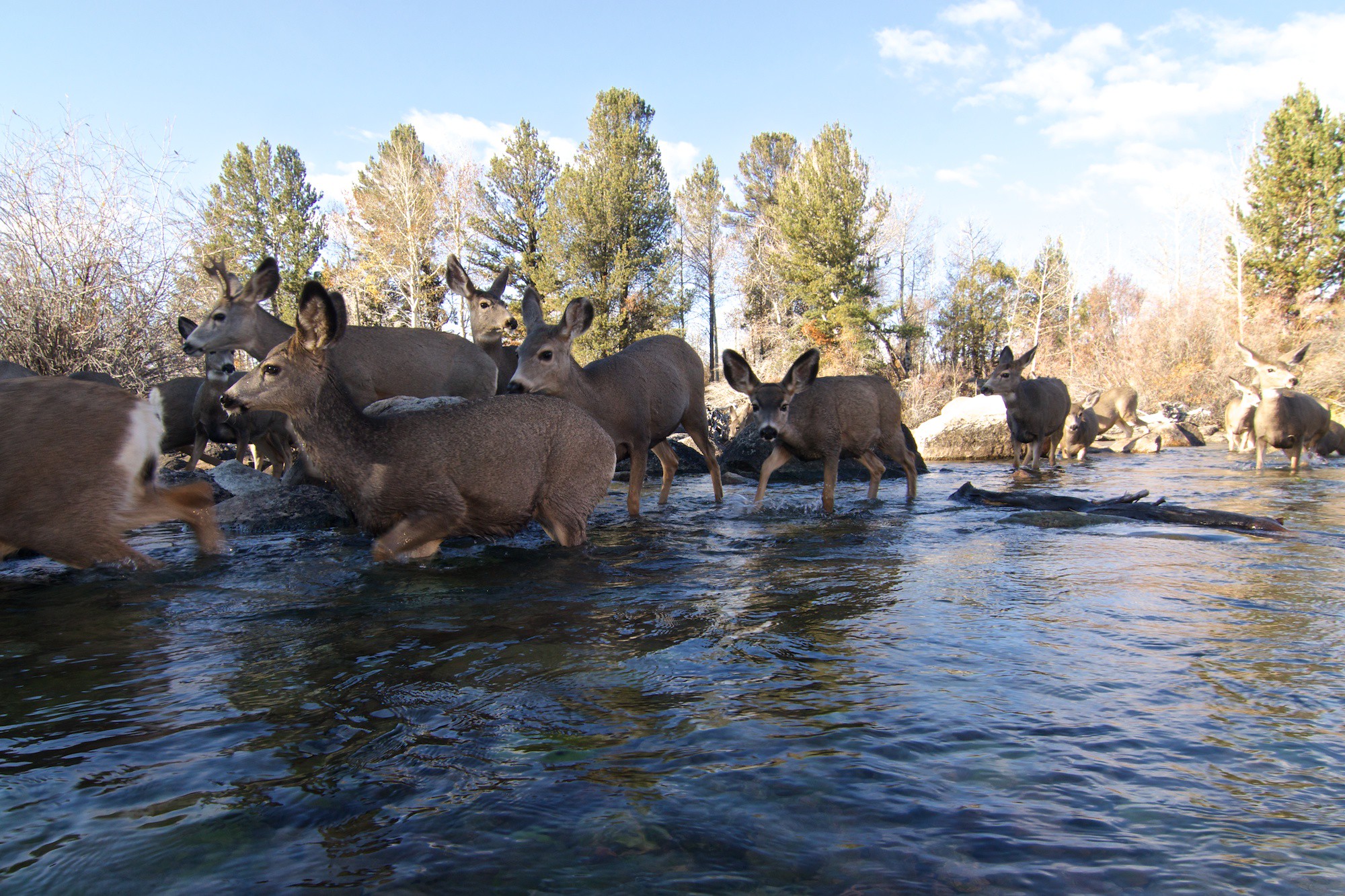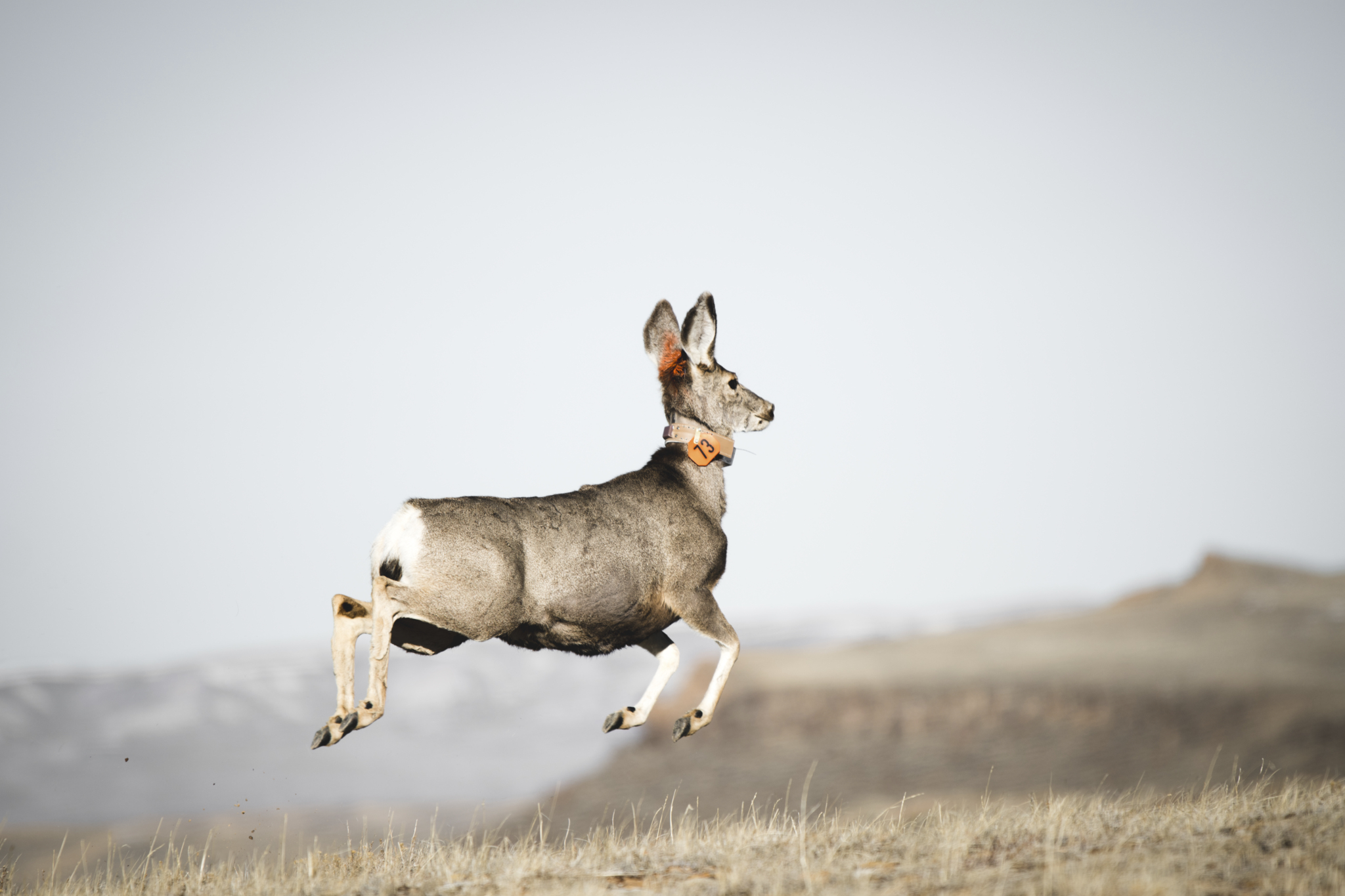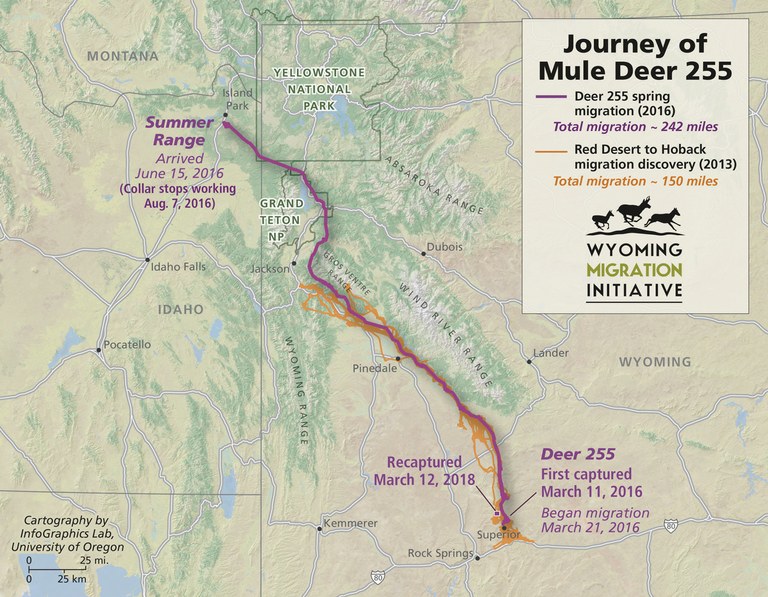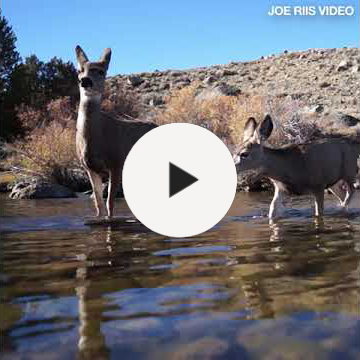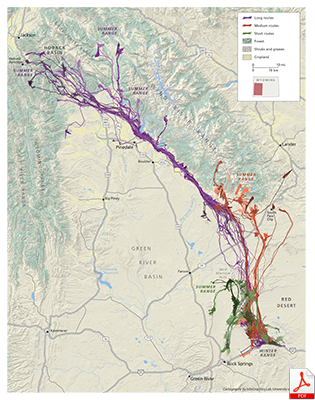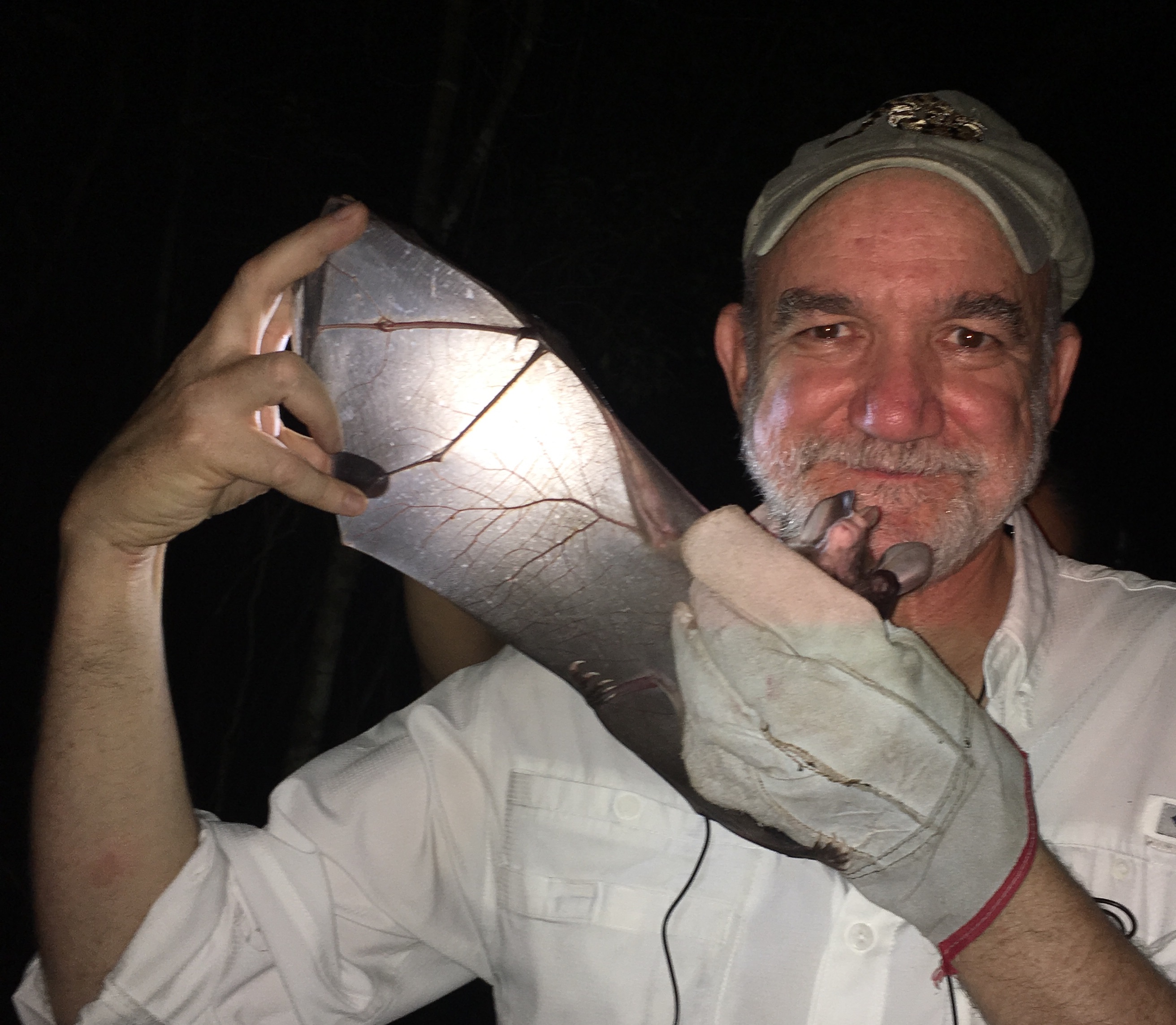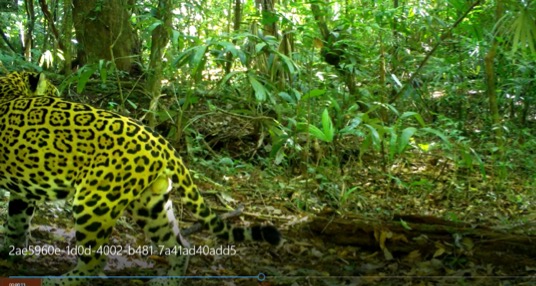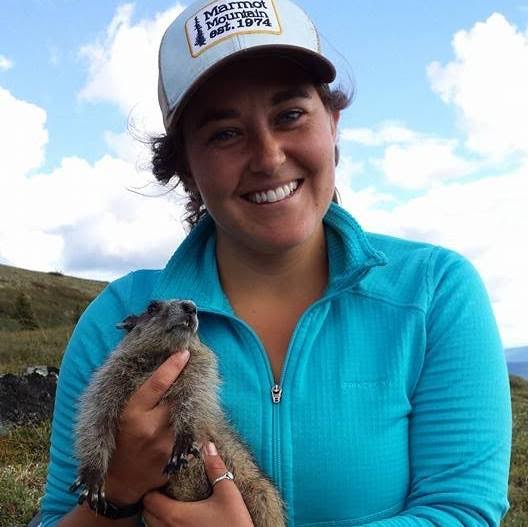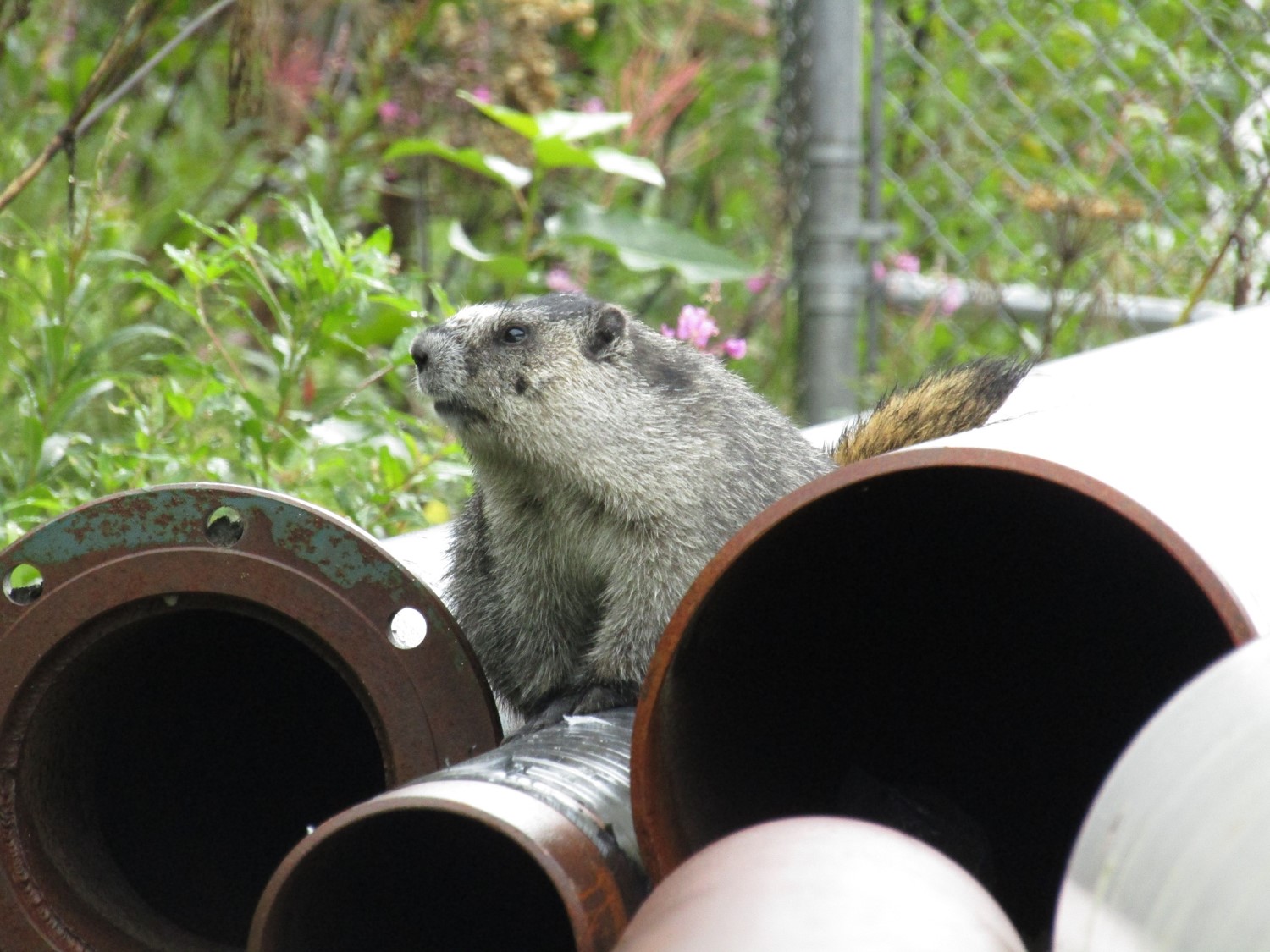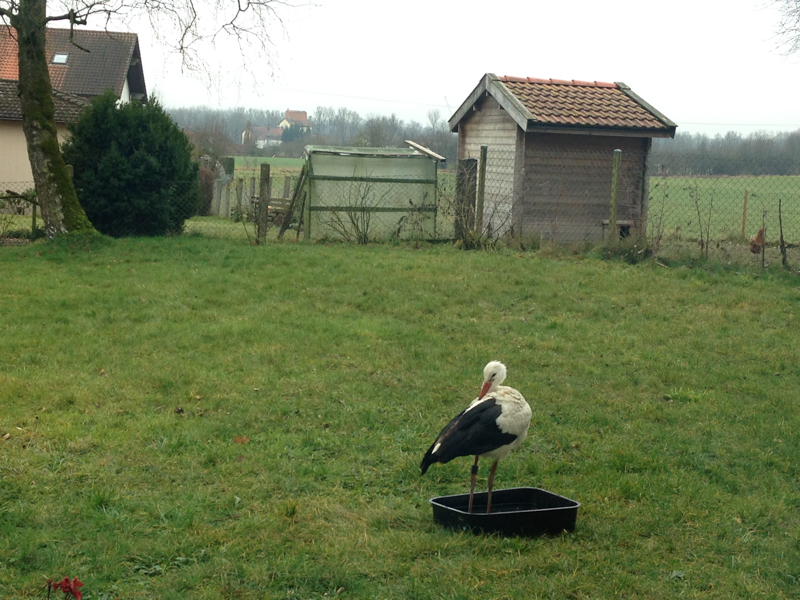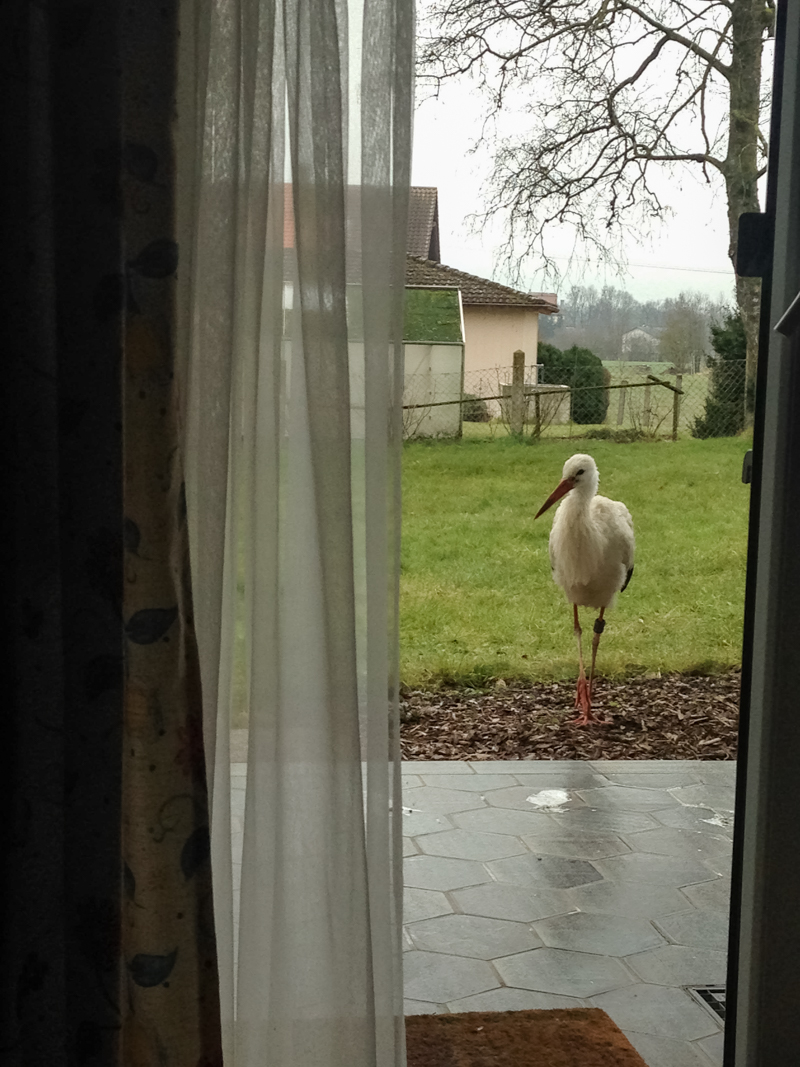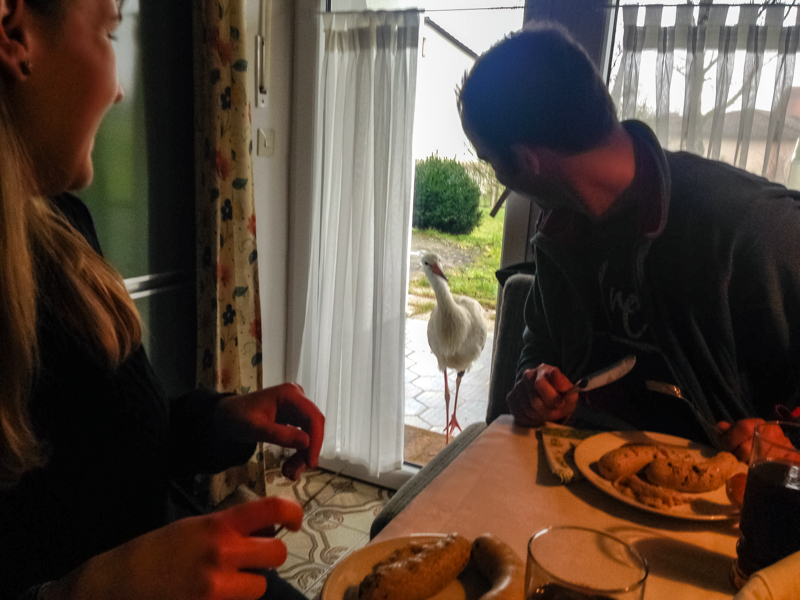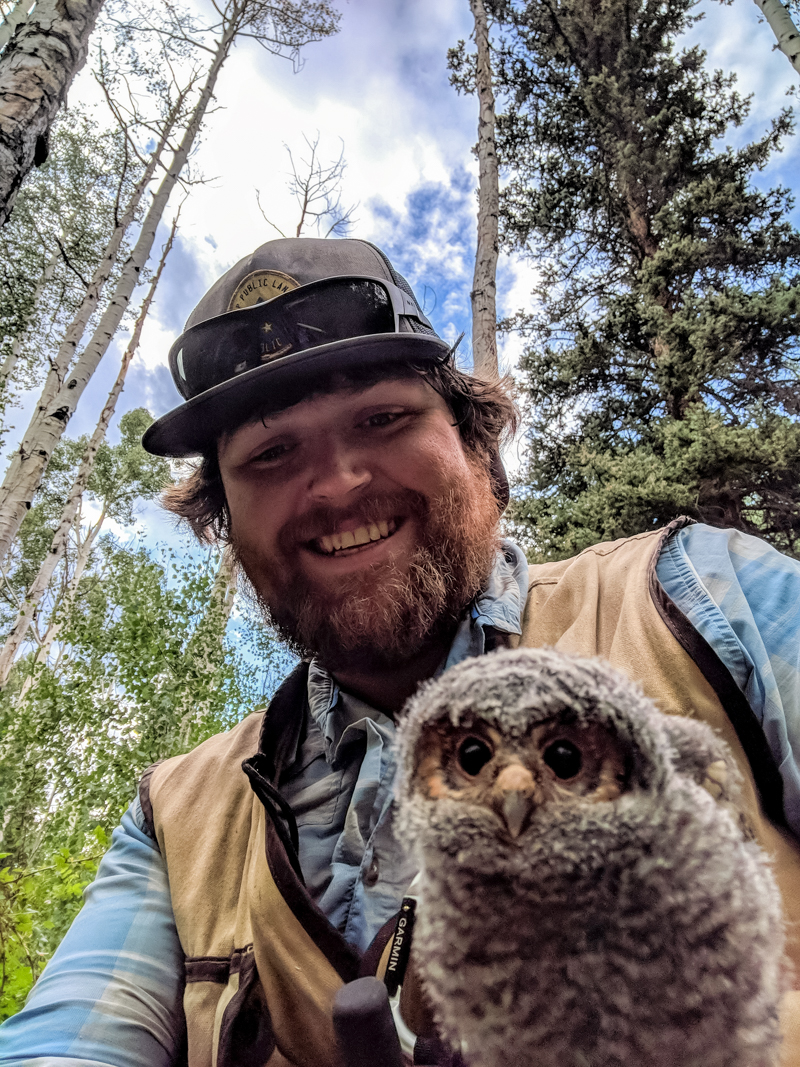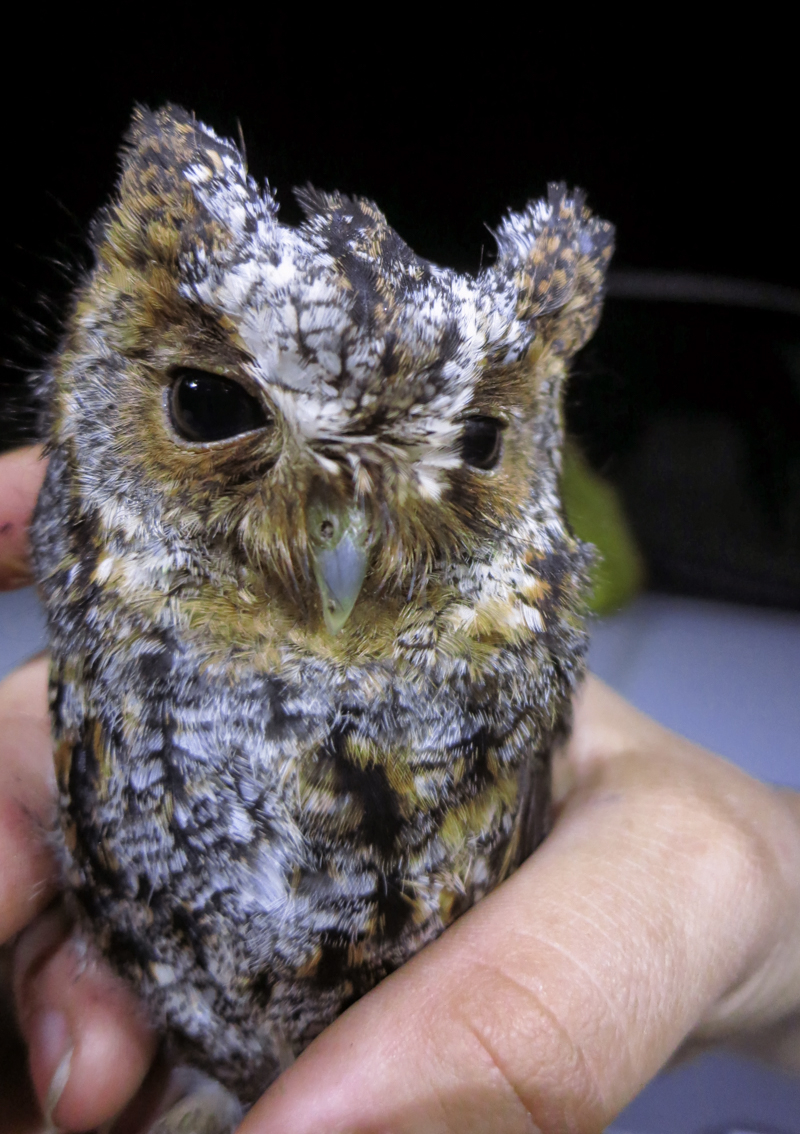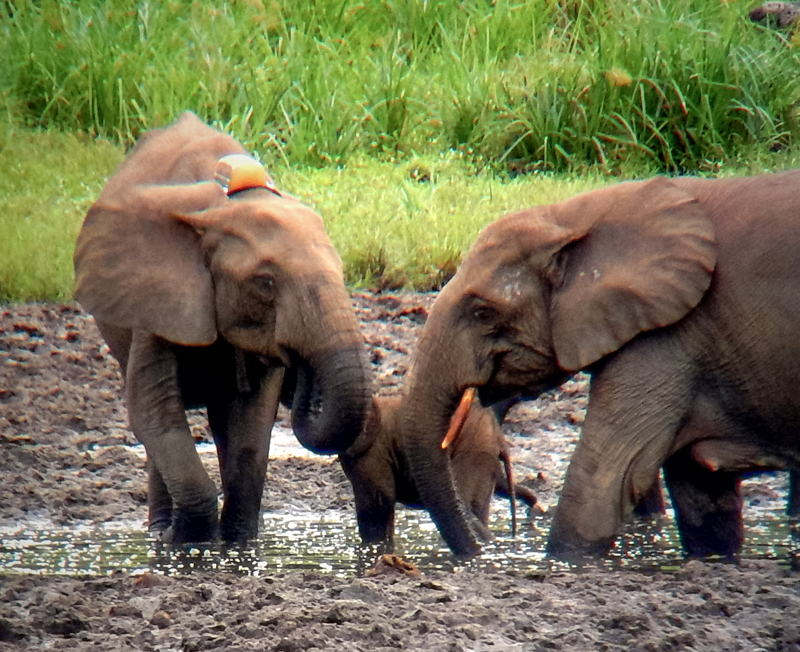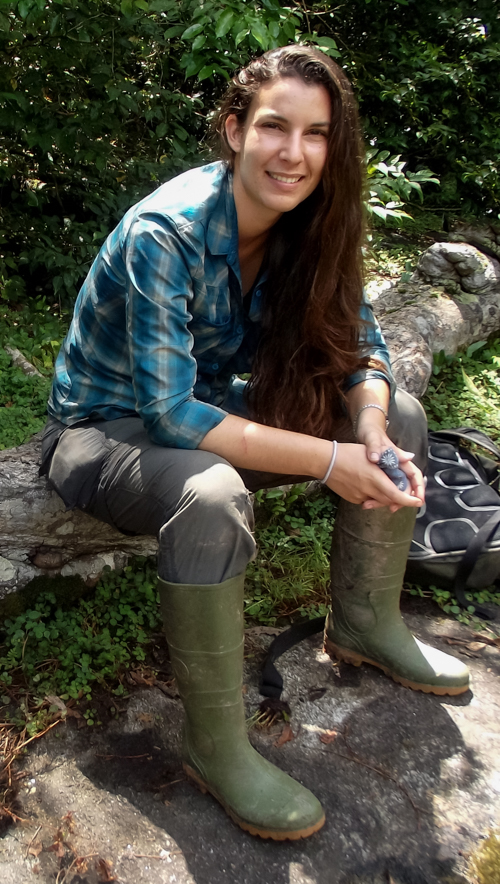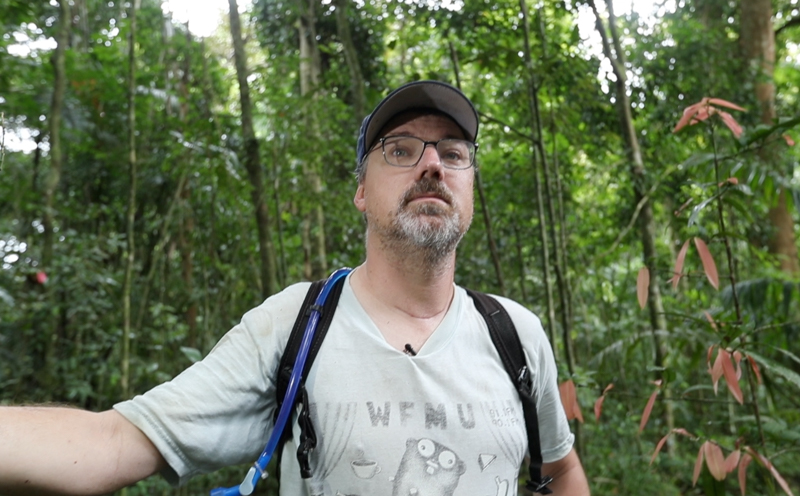
The Wild Animals Podcast delves into the drama and excitement of the lives of real animals, in the real world.
In each episode, scientists tell stories of individual animals they have gotten to know personally by following them with technology like animal tracking or camera trapping. Your host, Dr. Roland Kays, is an expert with this technology, and has tracked animals all over the world. Kays is Head of the Biodiversity Research Lab at the North Carolina Museum of Natural Sciences and is a Research Professor at NC State University.
Season 3
Latest Episode
Mamma Jane the Ocelot reality star
- Date: 3 May 2023
- Summary: Ocelots in Texas are closely monitored, so Mamma Jane grew up around remote cameras since 2011, and wasn’t afraid of the lenses. When Fin and Fur Films called about doing a documentary Dr. Lombardi was skeptical if they could get a shot of Mamma Jane and her kittens, but thought they might be able to get some footage with remote cameras. He was right, and guided by Jay’s earlier camera-trapping experience and GPS telemetry data, the crew turned Mamma Jane into a reality star in the PBS Nature documentary American Ocelot.
- Guest: Dr. Jason Lombardi is the large carnivore research coordinator for the California Department of Fish and Wildlife, a population and landscape ecologist, and a member of the IUCN SSC Cat and Small Carnivore Specialist Groups. You can follow him on Twitter @JayVLombardi
- Species: Ocelots are medium-sized wild cats that range from Texas down through Central and South America. While common in some parts of their range, In Texas, ocelots are listed as an endangered species due to habitat loss and road accidents. The remaining population of ocelots in Texas is estimated to be around less than 120 individuals but conservation efforts are ongoing to protect and restore their habitat, and a re-introduction effort is underway to establish a new third population in a part of their historic range in southern Texas.
- Subscribe to the Podcast
F202: The Yellowstone Cougar Who Showed the Value of Protected Areas
- Date: 25 April 2023
- Summary: F202 lived right in the heart of Yellowstone National Park where Anton used groundbreaking technology to study not only where she moved, but also how she hunted. F202 was a fantastic hunter and mom, rearing a number of litters in the park. However, some of her offspring wandered out of the park where they can be legally hunted, showing the challenges of large predators living with the risk of this harvest, and the value of protected areas as a way to help species survival.
- Guest: Dr. Colby Anton is the Black Bear Biologist for Montana Fish, Wildlife & Parks. He worked with the Yellowstone Cougar Project as part of his PhD research with the Yellowstone Center for Resources.
- Species: The cougar, also known as the mountain lion, puma or panther, is a large feline found throughout North and South America. They typically weigh between 115 to 220 pounds and can measure up to 8 feet in length. Cougars are known for their powerful hind legs which allow them to take down prey up to three times their own weight. These big cats are solitary creatures and apex predators in their ecosystem and play a crucial role in maintaining the balance of the food chain.
- Subscribe to the Podcast
Episode 9: Lobstah: The Fisher Who Lived the Salt Life
- Date: 17 April 2023
- Summary: Fishers are woodland creatures who traditionally avoid people and prefer dense forests. Lobstah was a (very large) fisher who bucked this trend by surviving in small suburban forests, hunted in coastal shrub habitat, and even ran along the rocky coast of Rhode Island. By tracking his movements, Ganoe was able to learn more about how fishers have adapted to the modern word.
- Guest: Laken Ganoe is a PhD student at the Applied Ecology lab at the University of Rhode Island. You can follow her on Twitter @GanoeResearch
- Species: Fishers are one of the largest members of the weasel family and live in northern forests of North America where they hunt small- and medium-sized prey. Their populations declined precipitously in the early 1900s but made a recovery later in that century. Their success in suburban forest and Rhode Island shows their adaptability.
- Subscribe to the Podcast
Episode 8: 007: The Warbler Whose Secret Missions Underpin a Species Recovery
- Date: 10 April 2023
- Summary: In 2019 a small yellow bird in The Bahamas was given a radio transmitter and a mission—show us what Kirtland’s warblers do. Nicknamed 007, this bird not only migrated all the way to Michigan, but also displayed a new behavior that scientists had never tracked at this spatial scale before. This discovery shows how the species was able to recover its lost range over the past three decades and offers hope for their adaptation to climate change.
- Guest: Dr. Nathan W. Cooper, Research Ecologist at the Smithsonian Migratory Bird Center. You can learn more about Cooper’s research at his lab’s website and by following him on Twitter @Nature_Is_Grand
- Species: Kirtland's warbler is a beautiful yellow and gray bird that nests in the Great Lakes and migrates to The Bahamas for the winter. It is a specialist on regenerating habitats, nesting in jack pine forests that are 5-15 years old. In the past this was a good strategy, as natural fires created new habitat every year. But humans have suppressed this fire cycle, and the warbler faced massive declines as its habitat dwindled, reaching a low point of 167 singing males in 1987. Since then, conservation managers have brought disturbance back to the landscape by clearcutting and planting jack pine trees and allowing some areas to burn and naturally regenerate. The birds have responded, with a population that now numbers more than 2,200 singing males. The species was removed from the Endangered Species list in 2019, but conservationists will have to continue managing the landscape to prevent new declines
- Subscribe to the Podcast
Episode 7: Kilkenny: The Red Wolf Who Hatched a Hypothesis
- Date: 3 April 2023
- Summary: While Dr. Hinton progressed along his career as a wolf biologist – from intern to master’s student to PhD student – the Kilkenny female (11170F) matured from a young teenage wolf into an Alpha female. While Hinton spent time tracking and watching the Kilkenny female, a new idea started crystallizing in his mind about what factors made the difference between a wolf deciding to breed with another wolf, versus hybridizing with a coyote.
- Guest: Dr. Joseph Hinton is a Senior Research Scientist at the Wolf Conservation Center.
- Species: Red wolves are one of the most endangered species of mammals on the planet. The last known red wolves in the wild were brought into captivity in a bid to rescue them from extinction during the 1970s. During 1987, some of their progeny were reintroduced into the wilds of eastern North Carolina. That reintroduced population flourished at first, but then coyotes colonized the area. This created a new concern that wild red wolves would hybridize their way to extinction by mating with coyotes, and thus losing their unique "wolfiness" over time. Finding ways to reduce hybridization is key to saving the red wolves.
- Subscribe to the Podcast
Episode 6: Cheetah 784: The Orphan Who Overcame
- Date: 27 March 2023
- Summary: When poachers killed the mom of young cheetah 784 there was only a slim chance the cub would survive on her own. With no one to teach her how to hunt or navigate the dangers of the open plains, Anna Kussler feared the worst. But 784 persevered and started to figure out how to use her speed to her advantage. Anna and her team watched from nearby, like guardian angels, and taught the cat how to avoid villages. At the same time, 784 was keeping an eye on Anna, and saved her from having the most embarrassing birthday ever.
- Guest: Anna Kussler is a site manager for the Zambian Carnivore Program at Kafue National Park in Zambia
- Species: The cheetah is a large feline found primarily in Africa, although a small population also lives in Iran. They are known for their speed, with the ability to run at speeds of up to 75 mph, making them the fastest land animal.
- Subscribe to the Podcast
Episode 5: 003: The White-tailed Deer Who Was a Gold Medal Marathoner
- Date: 20 March 2023
- Summary: Deer 003 was the most unusual animal in a large study of deer in Missouri. While most animals disperse a few miles to set up their home range, this deer set out on a marathon trek, breaking records as he went. Moving at night to avoid archery hunters, 003 was on a mysterious mission, and showed scientists just how far a deer can move.
- Guest: Dr. Josh Millspaugh is the Boone and Crockett Professor of Wildlife Conservation at the University of Montana.
- Species: White-tailed deer are one of the most common, most loved, and most hated mammals in North America. They thrive in rural and urban areas and are the most important game species in the country.
- Subscribe to the Podcast
Episode 4: Turkey 473: The Southern Chick Who Sported a Beard and Was a Truck Junkie
- Date: 13 March 2023
- Summary: Even before he launched a rocket net over her head, Dr. Chamberlain knew Turkey 473 was a special bird because she sported a big beard (which is very unusual for hens). After outfitting her with a radio transmitter, Chamberlain tracked 473 for more than two years, monitoring her nesting behavior, and learning how turkeys avoid, or fail to avoid, their many predators. One year her nest seemed positioned at the ideal place to watch for Chamberlain’s approaching field truck, which seems like it would make his work easier, but actually threatened to derail the research.
- Guest: Dr. Michael Chamberlain, Terrell Distinguished Professor of Wildlife Ecology and Management, Warnell School of Forestry and Natural Resources, University of Georgia. You can follow him on Twitter @WildTurkeyDoc.
- Species: Wild turkeys are one of the largest and most distinctive North American birds. They were once on the brink of extinction, but have made a remarkable recovery thanks to conservation efforts, and are now hunted for sport.
- Subscribe to the Podcast
Episode 3: Samuel: The Little Giant Tortoise Who Lived
- Date: 6 March 2023
- Summary: Dr. Blake first met Samuel as the hatchling tortoise left its nest on the Galapagos Islands. A tiny tracking tag helped Stephen and his team track the little guy as he legged it away from his nest site, navigating the harsh volcanic landscape in search of safety and some edible foliage. Eight years later, Samuel has grown to over 15 pounds and survived the most dangerous period of his life, which now could stretch on over the next century and beyond.
- Guest: Stephen Blake, PhD, assistant professor of biology at Saint Louis University. You can learn more about his work on the Galapagos at www.gianttortoise.org or read about his urban turtle work at www.forestparklivinglab.org.
- Species: The Galapagos giant tortoise can weigh over 600 pounds and live up to 200 years. They are a symbol of the Galapagos Islands and play vital ecosystem roles as seed dispersers. Although their populations have been greatly reduced due to historic hunting and habitat loss, new conservation efforts are now restoring their numbers.
- Subscribe to the Podcast
Episode 2: 5715: The Woodpecker Who’s Seen It All
- Date: 27 Feb 2023
- Summary: Bird 5715 was the, you guessed it, 5715th bird captured as part of a long-term study of acorn woodpeckers since 1974 at Hastings Natural History Reservation in Carmel Valley California. She had the fortune of being born into the richest territory around, with tens of thousands of acorns stashed into woodpecker-created holes in trees (aka granaries). However, this privileged upbringing also presented challenges to her finding a mate under the watchful eye of her record-setting father, forcing 5715 into a series of gang fights and walkabouts.
- Guest: Dr Sahas Barve is the John W. Fitzpatrick Director of Avian Ecology at the Archbold Biological Station. You can follow him on Twitter @SahasBarve.
- Species: Acorn woodpeckers are native to the western United States south to the Colombian Andes. In California they are famous for their unique behavior of storing acorns in granaries drilled into trees.
- Subscribe to the Podcast
Episode 1: Waffles: The Hyena Who Climbed the Social Ladder
- Date: 20 Feb 2023
- Summary: Spotted hyenas live in large clans ruled by a queen who typically passes her high rank onto her daughters. Waffles was born from a low-ranking (peasant) family but was able to assemble a gang that helped her claim the throne. This risky venture paid off for Waffles, who had numerous offspring (named after syrup brands), but ended tragically for some of her gang members.
- Guest: Dr. Eli Strauss is a postdoctoral researcher at the Max Planck Institute for Animal Behavior and Michigan State University. His work with Waffles is part of the Mara Hyena project, affiliated with Michigan State University. You can follow Strauss on Twitter @_straussed and the hyena project @MaraHyenas.
- Species: Spotted hyenas are a large African predator with distinct vocalizations, including a high-pitched cackle that has led to their nickname of the laughing hyena. They are highly social animals and live in large clans, which can contain up to 100 individuals. Hyenas are also famous for their unique reproductive biology, with females having pseudo-penises that are structurally and functionally similar to the males'.
- Subscribe to the Podcast
Season 3 Preview
Season 2
Episode 10: Leroy, the Fisher Who Learned “No Means No” the Hard Way
- Summary: Leroy was one of the first fishers to ever get a GPS tracking collar, providing immediate, new discoveries about how this “wilderness species” colonized suburbia. Dodging police and sneaking through culverts, Scott eventually found Leroy dead in a swamp — a murder mystery tied to the unusual mating behavior of fishers.
- Guest: Dr. Scott LaPoint is a research scientist at the Black Rock Forest Consortium. You can follow more of his work on Twitter @sdlapoint. You can also read more about this project in a series of blog posts published in the New York Times.
- Species: The fisher (Pekania pennanti) is a member of the weasel family from temperate North America. The fisher is famous for hunting porcupines but also eats a variety of small prey.
- Subscribe to the Podcast
Episode 9: Josphine, the Most Reliable Sea Turtle
- Summary: Josephine was a sea turtle who found an easy meal by raiding a fisherman’s nets. Kate was happy to help the fisherman by moving the turtle and putting a tracking device on it. Undeterred, Josephine returned to her favorite fishing spot, providing interesting data and creating a new dependable and friendly link between fisherman and turtle biologist.
- Guest: Dr. Kate Mansfield, Director of the Marine Turtle Research Group, University of Central Florida. You can also follow their work on Twitter @UCFTurtleLab.
- Species: Loggerhead turtles (Caretta caretta) are an oceanic turtle found around the world. They are omnivorous, feeding mainly on bottom-dwelling invertebrates, but also eating fish if they can catch them.
- Subscribe to the Podcast
Episode 8: Diane, the Shark That Jumped Out of the Water Four Times in 47 Seconds
- Summary: Lucy met Diane the basking shark when she gave the fish a small tracking tag off the coast of Scotland. While Diane typically loafed around eating plankton, this high-tech tag showed that Diane would occasionally sprint to the surface and jump into the air over and over again. The tag measured the forces required to pull off such an athletic feat and allowed scientists to estimate that this flurry of acrobatics would cost her 10% of her daily energy balance. Lucy is also attaching cameras to sharks to try to discover their breeding grounds. They have yet to document mating, but footage from last year showed a gathering of sharks indicating some kind of social activity.
- Guest: Dr. Lucy Hawkes is a Senior Lecturer in Physiological Ecology at the University of Exeter. You can read more about her basking shark tracking study online and follow her on Twitter to see what happens next @DrLucyHawkes.
- Species: The basking shark (Cetorhinus maximus) is the second-largest living shark and one of three plankton-eating shark species, along with the whale shark and megamouth shark. Adults typically reach 7.9 m (26 ft) in length.
- Subscribe to the Podcast
Episode 7: Etumbe, the Bonobo Who Led Her Group Back to the Wild
- Summary: Etumbe was rescued from captivity and became part of the first group of bonobos to be released back into the wild. Her seniority and calm demeanor helped her become one of the leaders of this new group and also led to an incredible interaction between humans and their closest wild cousin.
- Guest: Dr. Brian Hare, Professor of Evolutionary Anthropology at Duke University. You can read more about the conservation of Bonobos, and donate to help save them, at the Lola Ya Bonobo website. You can also follow Brian’s research on Twitter @bharedogguy.
- Species: Bonobos (Pan paniscus) are one of our two closest relatives in the Animal Kingdom, a sister species to the better known chimpanzee. Bonobos live only in the Democratic Republic of the Congo where they are threatened by hunting and deforestation.
- Subscribe to the Podcast
Episode 6: 36M — The Mountain Lion by Which All Other Lions Will Be Compared
- Summary: There are a surprising number of mountain lions in the hills just above Silicon Valley. Chris Wilmers is studying how these big cats make a living in the midst of so much Bay Area development. 36M unwittingly joined the study when he got trapped and equipped with a tracking collar with technology fancier than any other study, as you would expect from Silicon Valley.
- Guest: Dr. Chris Wilmers, University of California, Santa Cruz.
- Species: Mountain lions (Puma concolor) are the largest cats in most of the United States, and expert hunters of deer. Although they were extirpated from the eastern U.S., their populations are healthy in much of the West, including some natural areas near people.
- Subscribe to the Podcast
Here’s the crazy thing about urban Pumas:
— Max Allen (@CarnivoreLab) January 14, 2020
Map 1 is the UCSC campus, with a red circle for Map 2 location - which shows our building, with Chris’s office (C) and my former office (X), and an arrow for where M36 (a big territorial male) killed a deer.
Video: https://t.co/ERyM0eWwkm https://t.co/y117dS3i38 pic.twitter.com/dItKpa243j
Episode 5: Bobby, the World’s Largest Ocelot
- Summary: Bobby was a big bruiser of an ocelot. When Ricardo first trapped and collared him, Bobby was feisty and scarred after prowling his tropical island home like a king, sending smaller males fleeing with flurries of claws and teeth. Eventually, however, those teeth gave way, and the next generation of ocelots had the last laugh.
- Guest: Ricardo Moreno, President of Yaguará Panamá, Research Associate at the Smithsonian Tropical Research Institute, and an Emerging Explorer at National Geographic.
- Species: Ocelots (Leopardus pardalis) are spotted wild cats that range across a variety of habitats from Texas to Argentina. They typically hunt small prey like mice, but in Panamá, Ricardo found them also eating agoutis, sloths and even deer. Ocelots usually weigh between 18 to 35 lbs (8.5 to 16 kg), with males being larger than females.
- Subscribe to the Podcast
Episode 4: Agui the Oedipus Monkey
- Summary: Jorge spent over two years living in a remote Amazonian jungle where he developed a special relationship with a monkey that looked like his mom. Also in this time he had to work with FARC guerrillas, lived off of candy, and once hallucinated a Hobbit.
- Guest: Dr. Jorge Ahumada, Senior Wildlife Conservation Scientist at Conservation International and Executive Director at Wildlife Insights You can follow his work on Twitter at @jorahum.
- Species: White-bellied spider monkeys (Ateles belzebuth) live in northern South America.
- Subscribe to the Podcast
Episode 3: Title: 255, The Deer Who Just Kept Going
- Summary: Deer 255 is part of a herd that winters in the Red Desert of Wyoming. In the spring, some animals stay locally, some migrate up into the nearby foothills, and some, like 255, keep going on a serious long-distance migration. This incredible annual movement was only discovered a decade ago, and 255 now holds the record for the longest deer migration. She was first tagged by Anna and her helicopter cowboy colleagues six years ago, and has managed the 484-mile round-trip every year. She annually dodges wolves, crosses roads, and sneaks through oil fields in her search for greener pastures and a safe place to have her fawns.
- Guest: Ann Ortega is a PhD Student at the University of Wyoming studying deer as part of the Wyoming Migration Initiative. You can follow their work on Twitter @wyo_migrations.
- Species: Mule Deer (Odocoileus hemionus) is from western North America and is distinguished from other deer by its large ears, unique tail and branching antler pattern.
- Subscribe to the Podcast
Episode 2: Pacman the Jaguar With Two Girlfriends in Two Different Countries
- Summary: Pacman was a jaguar in the Mayan rainforests of Southern Mexico. He was easily recognized by a big spot on his flank shaped like his namesake videogame character. International collaboration between scientists led to the surprise finding that Pacman would cross a major river to patrol parts of a territory in Honduras as well. This double life seemed to work for Pacman, until a tragic and surprise ending that served as a warning to Mexican conservationists of a new threat in their country.
- Guest: Dr. Rodrigo Medellín is a Professor at the National Autonomous University of Mexico and a National Geographic Explorer at Large. You can follow Rodrigo’s ongoing work via Twitter @RodrigoMedellin or learn more by checking out the BIOCONCIENCIA organization and the Programa Jaguares in the Selva Maya.
- Species: The jaguar (Panthera onca) is the largest cat in the New World, slightly smaller than tigers and lions, but with a stronger bite. Jaguars live across a variety of habitats in Central and South America where they hunt large prey, especially peccaries. Occasionally, they’ll prey on cows, which can put them at conflict with ranchers who kill jaguars to defend their herds. Recently, black market trade of jaguar body parts for Chinese “traditional medicine” has added more incentive for jaguar hunting, threatening their survival.
- Subscribe to the Podcast
Episode 1: John Snow, the Hoary Marmot Who Died and Came Back to Life Again.
- Summary: Biologists often use themes to name their study animals, making it easier to keep track of which group an individual was from. John Snow was a male marmot in the Game of Thrones marmot colony, obviously. As biologists tracked this marmot they were amazed at how much the animal’s story paralleled the character from the TV show [Spoiler Alert!].
- Guest: Katie Rubin, Ph.D. student at the University of Alaska, Fairbanks working in the Mammal Department at the University of Alaska Museum of the North. You can read more about their work at the Alaska Marmoteers Facebook site.
- Species: The hoary marmot is a large member of the squirrel family that lives near the tree line in the mountains of northwest North America. They look for places with grasses and forbs to eat and rocky areas for cover. They hibernate for all the cold months, emerging in the summer to breed and gain weight. Their body mass varies over the course of the year, from ~ 3.75 kg (8.3 lb) in May to around 7 kg (15 lb) in September, with exceptionally large males reaching 13.5 kg (30 lb).
- Subscribe to the Podcast
Season 1
Season 1 Introduction
Episode 10: Hansi, the stork who brought a baby to a farm
- Summary: This week, Dr. Martin Wikelski shares the story of Hansi, a young stork that lost his flock while migrating south for the winter. Instead of ending up in Africa, he was stranded in Germany as winter quickly approached. Listen in to hear how Hansi survived and brought a baby to a farm.
- Guest: Dr. Martin Wikelski, Director of the Max Planck Institute for Animal Behavior, Department of Migration. You can also follow Martin’s research on Twitter @AnimalTracking
- Species: White Storks (Ciconia ciconia) breed in Europe and western Asia and migrate south for the winter. They forage in natural and agricultural fields where they hunt insects and small vertebrates. They have a long history of associating with humans, and still today nest in towns. An ancient legend, popularised by a 19th-century Hans Christian Andersen story called “The Storks,” suggests that the stork is responsible for bringing babies to new parents.
- Released: August 13, 2019
- Subscribe to the Podcast
Episode 9: B5: The Flamulated Owl Who Got Away, Over, and Over, and Over Again
- Summary: Studying flammulated owls is tough work. It involves trekking on mountain slopes with tall catch poles while avoiding bears and mountain lions. Plus, the elusive birds don’t make it easy. This week, we meet Scott Yanco as he recounts capturing and researching the movement and ecology of an owl named B5.
- Guest: Scott Yanco is a graduate student at the University of Colorado, Denver. You can also follow him on Twitter @ScottYanco.
- Species: Flammulated owls (Psiloscops flammeolus) are tiny birds (~15 cm (6 in) long) with a long (~36-cm (14-in)) wingspan that helps them fly rapidly to catch their favorite food: nocturnal moths. They breed in pine forests of the US and Canada and migrate south to Mexico and Central America for the winter.
- Released: August 6, 2019
- Subscribe to the Podcast
Episode 8: Marijo, the forest elephant who liked to run the tracks
- Summary: Follow the story of guest Ameila Meier about her adventures through the remote African forests of Gabon to track an elephant named Marijo. Throughout her journey she encountered local farmers, ivory poachers, and even learned the hard way that getting too close to an elephant may not turn out the way you’d like it to.
- Guest: Amelia Meier, Graduate student at Duke University
- Species: Elephants are big, but forest elephants (Loxodonta cyclotis) are hard to see. They are shy and can rapidly disappear into the thick rainforest of central Africa. However, they can just as quickly reappear and raid crops, stealing food from local farmers, and endangering their own lives if locals retaliate. Although their tusks are smaller than those of savanna elephants, they are still coveted by ivory poachers, which creates another threat to their survival. Conservationists are working hard to protect the elephants and find ways to minimize the conflict with locals.
- Released: July 30, 2019
- Subscribe to the Podcast
Episode 7: Joy, the show-off humpback whale
- Summary: Lisa Kettemer met Joy the humpback whale when it enthusiastically swam up to the boat and allowed biologists to tag it. Joy’s story includes intrepid work in frigid oceans and a mysterious but real-life white whale. Find out more about this project including tracks from Joy and other whales.
- Guest: Lisa Kettemer is a PhD Student at the Arctic University of Norway in Tromso, you can also find Lisa on Twitter.
- Species: Humpbacks (Megaptera novaeangliae) are one of the most familiar of the great whales with characteristic long flippers, mournful underwater songs, and a habit of making spectacular leaps out of the water. They are filter feeders, using baleen in their mouths to filter out krill and other tiny organisms. Although humpbacks are relatively easy to spot from a boat, it is hard to track their movements across the global oceans, and we are only now starting to learn about their huge migrations.
- Released: July 23, 2019
- Subscribe to the Podcast
Episode 6: Vanilla Ice - the coati who liked the ladies
- Summary: While male coati typically remain solitary creatures after mating, “Vanilla Ice” has been documented to prefer spending time with his potential mates. Listen to this week’s podcast featuring Dr. Ben Hirsch as he goes through video and DNA tests to explain how this unusual behavior was discovered.
- Guest: Dr. Ben Hirsch, Lecturer in Zoology, James Cook University, Australia
- Species: South American Coatis (Nasua nasua) are a pointy-nosed and striped-tail member of the raccoon family with a unique social system where females and their young form large groups while males usually strike out on their own.
- Released: July 16, 2019
- Subscribe to the Podcast
Episode 5: P22, the Mountain Lion of Hollywood
- Summary: Can large predators coexist with humans? As the human population continues to expand, the natural habitats of many animals shrinks. Listen to the story of P22, a mountain lion that lives under the Hollywood sign. As part of his research with Los Angeles carnivores, Dr. Seth Riley has been following P22 since 2012. He joins us to tell the tale of how P22 has survived for the last 10 years despite mountain lions becoming more isolated. Our guest ends with a bold proposal that could not only ensure the future of Hollywood lions, but help other species as well.
- Guest: Dr. Seth Riley is Wildlife Ecologist with the National Park Service at Santa Monica Mountains National Recreation Area and Adjunct Faculty at the UCLA Department of Ecology and Evolutionary Biology.
- Species: Mountain Lions (Puma concolor) are North America’s largest cat, with the largest range (Alaska to Argentina) and the longest list of synonymous common names, including puma, cougar, catamount, and Florida panther. They are primary deer hunters, and can exist in a variety of habitats.
- Released: July 9, 2019
- Subscribe to the Podcast
Episode 4: Bravo Luis, the Capuchin Monkey who became the leader on a rainy day
- Summary: Listen to the incredible story of how one subordinate monkey, Bravo Luis, rose to power in the face of a disaster that nearly wiped out his entire group, leaving only Bravo and a few females to carry on. Dr. Meg Crofoot, who has been following Bravo for over 15 years, joins us to tell the tale of this reluctant monkey leader.
- Guest: Dr. Meg Crofoot, Associate Professor in the Department of Anthropology at the University of California, Davis and research associate at the Smithsonian Tropical Research Institute. She recently started a new job as a department director at the Max Planck Institute of Animal Behavior and as the Alexander von Humboldt-Professor at the University of Konstanz. You can learn more about her work in Panama at this video, and more about her latest research in this video.
- Species: White-faced Capuchin Monkeys (Cebus capucinus) live in Central American Rainforests where they climb through the trees in search of fruit and insects. Capuchin live in groups with a mix of related females (many sisters and mother-daughter) and unrelated males. Dominant males lead the group and defend their group’s territory against other groups. Larger groups have larger territories, and are more likely to win fights with other groups, although there is a home-field advantage to groups fighting from the core of their homerange.
- Released: July 2, 2019
- Subscribe to the Podcast
Episode 3: Osito, the bat who wanted a harem but ended up in a ditch
- Summary: Osito was a young male bat living in a dingy drainage ditch who struggled to maintain the interest of a local pack of young females. Dr. Teague O’Mara tells about Osito’s struggles and expands on his research in Panama into how bats know where to find food.
- Guest: Dr. Teague O’Mara, Assistant Professor at Southeastern Louisiana University and researcher at the Max Planck Institute for Ornithology
- Species: The Greater Spear-nosed Bat (Phyllostomus hastatus) is the second-largest bat in the Americas and feeds on fruit and whatever else it can catch and kill with its bone-crushing bite. Female groups hang out together for years (maybe decades) but only live and mate with one male in a given year.
- Released: June 25, 2019
- Subscribe to the Podcast
Episode 2: Jaeger, the python that should never have been in the Everglades
- Summary: Giant pythons have escaped from captivity and started to invade southern Florida. Biologists are scrambling to learn about how these snakes survive, with the hopes of eventually eradicating this invasive species. Monica Lasky tells the story of Jaeger, a huge snake she radio-tagged and later radio-tracked deep into the Everglades, dodging sawgrass and alligators along the way.
- Guest: Monica Lasky, Biologist, North Carolina Museum of Natural Sciences
- Species: Burmese Pythons are one of the largest snakes in the world. They are native to Asia, but common in the pet trade. A population of escaped pets has established in Florida where they are causing severe declines in the populations of native mammals like raccoons, opossums, and deer.
- Released: June 18, 2019
- Subscribe to the Podcast
Episode 1: Pluie, the wolf who inspired carnivore recovery across the west
- Summary: Pluie the wolf was one of the first animals to wear a satellite tracking collar with global readout to track her movements — no matter how far she went. And she went far! Dr. Mark Hebblewhite shares how the incredible travels of this one wolf inspired projects that protect large ecosystems, like the initiative Yukon to Yellowstone. Pluie was even featured on an episode of the West Wing!
- Guest: Dr. Mark Hebblewhite, Professor of Wildlife Ecology at the University of Montana
- Species: Wolves (Canis lupus) were originally widespread across the American West until settlers hunted and poisoned them to near extinction. Once protected, they started to recover their populations and reclaim lost ground.
- Released: June 11, 2019
- Subscribe to the Podcast






























